SCIENCE
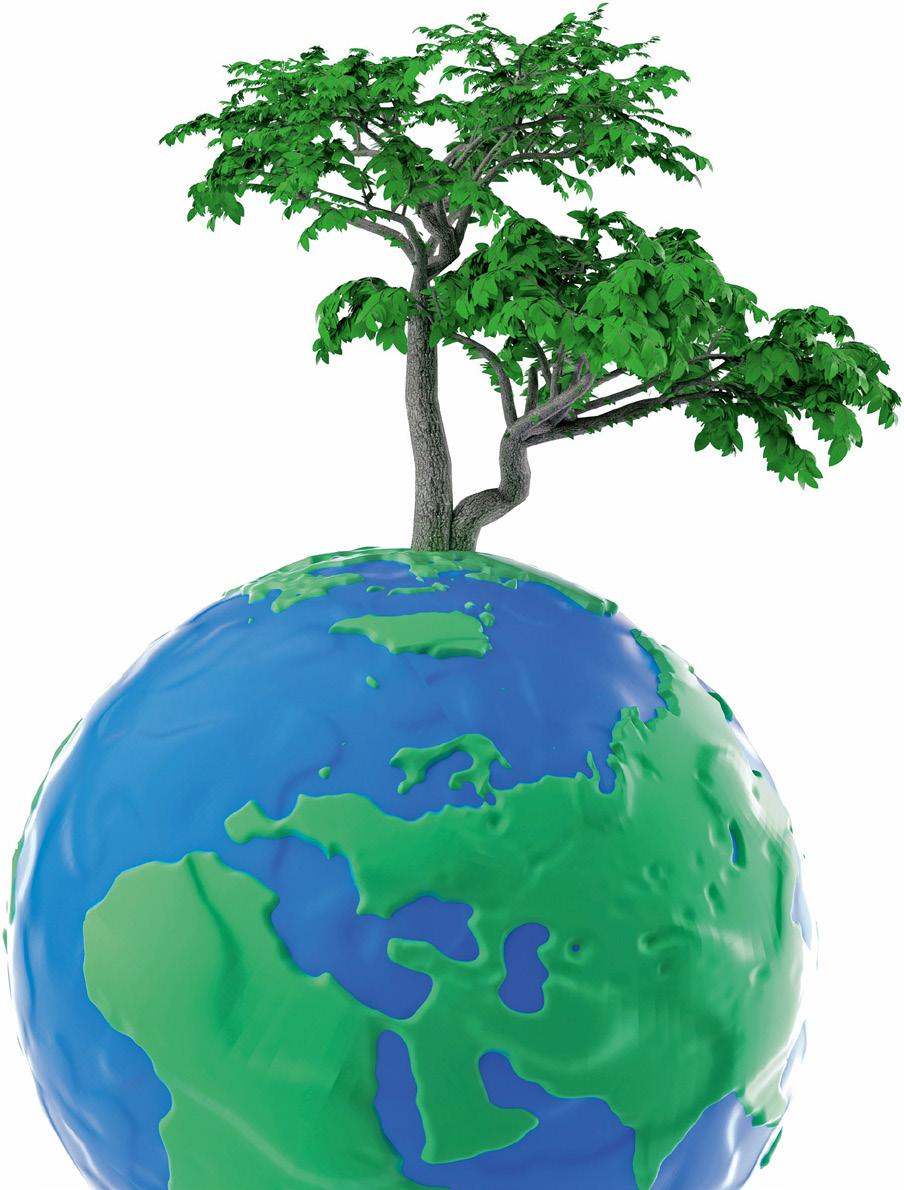
GLO BAL THINKeRS
DIGITAL PROjecT
ANDALUcíA sample
3 PRIMARY
Learning experience. A picture of a bulb full of sports equipment invites pupils to invent a sport everybody can play.
Target in action. Invent a sport boys and girls can play together.
Learning experience. A bike made out of fuit and vegetables introduces the importance of healthy habits.
Target in action. Design a Healthy Day poster for your school.


Learning experience. A figure in a wheelchair introduces the importance of making cities accesible.
Target in action. Think of ideas to help people in wheelchairs in your locality.
Learning experience. A gardener in a park presents the importance of all jobs.
Target in action. Choose your favourite job and complete a factfile.

Learning experience. A boy helping marine animals shows how important it is to respect marine animals. Target in action. Make a mural on ways to protect marine animals.

Learning experience. Some animals and plants invite us to protect living things.
Target in action. Design a wall display about the living things in your local area.
Learning experience. A map and a compass introduce the different ways to find our way around. Target in action. Draw a picture of your school and the position of the Sun.
Learning experience. A boy and a girl collecting rubbish help us reflect on how to take care of landscapes. Target in action. Brainstorm ideas to take care of landscapes around you.
Learning experience. A picture of the Earth melting introduces the importance of taking care of our planet.
Target in action. Make a poster to raise awareness about climate change.
Learning experience. A robotic frog introduces the idea of creating a project.
Target in action. Create a timeline for a project to promote sustainable technology.


Learning experience. A group of boys and girls swimming introduce the importance of water. Target in action. Brainstorm the importance of water for our health.
Learning experience. An image full of clocks helps us to understand the importance of time.
Target in action. Give some ideas about the importance of using a school planner.






PAGE LEARNING EXPERIENCE TAKE ACTION SDG 8 1 OUR bOdy 22 2 cArInG FOR yOUR bOdy 36 3 yOUr lOcAlIty 50 Gender equality Good health and well-being Sustainable cities and communities Peace, justice and strong institutions Life below water Life on land Life on land Sustainable cities and communities Climate action Sustainable cities and communities Good health ahd well-being Quality education 4 WhAt jOb dO yOU lIkE? 68 5 I lOvE ANImAlS 82 6 LOOkInG AFtEr nAtUrE 96 7 WhErE ARE yOU? 134 9 CLEANING OUR PLANET! 150 10 AlL AbOUt tEchnOlOgy 166 11 WATER AnD WEAthER 182 204 12 MAKE ThE MOST OF yOUR TIME! 112 8 I lIkE thIs lAnDsCAPE what
INTERDISCIPLINARY
1
are we goIng to learn?
TERM REVIEW
TERM REVIEW 2 TERM REVIEW 3
• Our body
• Changes in our body
• Nutrition: respiration and digestion
• Health and illness
• Food
• Eating well
• Your locality
• Your municipality
KNOW hOW TO: LEARN, APPLy AND RESEARCh
• Nutrition: circulation and excretion
• Interaction: senses, the brain and nerves
• The locomotor system
• Good hygiene
• Doing exercise and resting
• Expressing emotions
• Municipal services
• Municipal organisation
• Let’s go to a festival
Competence-based activities. This is my family. What are the stages in digestion? Taking your pulse.
Competence-based activities. Emergency situations. Food labels. Move your body! Can you identify emotions?
Competence-based activities. Work in the town hall for a day! Elections in our classroom.
• Nature is rich
• Making produtcs
• Providing services
Competence-based activities. Delicious jam!
INTERDISCIPLINARY PROJECT · A picture is worth a thousand... Go shopping in your local shops!
• There are many living things
• Mammals
• Birds
• The interaction function in plants
• The nutrition function in plants
• The reproduction function in plants
• Using plants for orientation
• Ways to find your way around
• The Earth
• Elements of a landscape
• Mountain landscapes
• Plain landscapes
• Reptiles
• Amphibians
• Fish
• Invertebrate animals
• Living things and ecosystems
• Our interaction with the environment
• Taking care of our environment
• The solar system
• Rotation and revolution
• Coastal landscapes
• Taking care of our landscapes
Competence-based activities. Hands on feathers. Frogs grow up.
Competence-based activities. Look at that leaf! Plants make their own food! Growing our own plant. Does it come from a plant? What if...
Competence-based activities. Getting around my locality. Your own solar system.
Competence-based activities. Plain landscapes in Andalucía. Making my own piggy bank.
INTERDISCIPLINARY PROJECT · Commit to birds: Food and drink for birds
• Matter: mass and volume
• Using matter
• Matter changes
• Everyday technology
• Information and Communication Technologies (ICT)
• Projects help us
• Water in nature
• Taking care of water
• Atmospheric phenomena
• Yesterday, today and tomorrow
• Daily life activities
• Checking my calendar
• Energy and energy sources
• Taking care of our planet
• My first project: building
• My second project: programming
• The weather
• Environmental problems in Andalucía
Competence-based activities. Experimenting with matter. What is water like in nature? Take action for the planet.
Competence-based activities. Internet research. Solving problems. Building a machine. Creating a computer program.
Competence-based activities. Water cycle in my bottle. The weather forecast. Helping our environment.
• Learning form the past
• Protagonists
Competence-based activities. My solidarity calendar. Learning from our elders. I’m a famous inventor.
INTERDISCIPLINARY PROJECT · TIC-TAC Smile!: Investigating the past
GLOSSARy
living THingS 1
I love animals! Some animals are endangered. It is very sad. I don’t like plants. They don’t do anything. They are so boring!
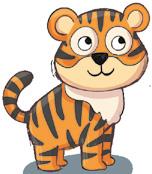
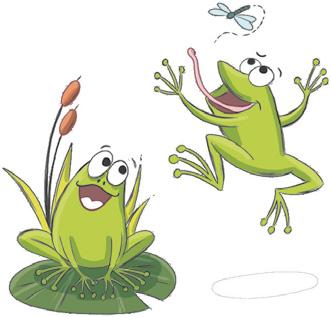
WHAT DO YOU THINK?
whaT Is goINg On arOUND you?

Why are plants important?
Why does Jorge need to learn more about plants? Our planet is in danger. Plants can help stop climate change!
WHAT cAN you do To HElp?
Design your school garden! Help people understand why plants are important.

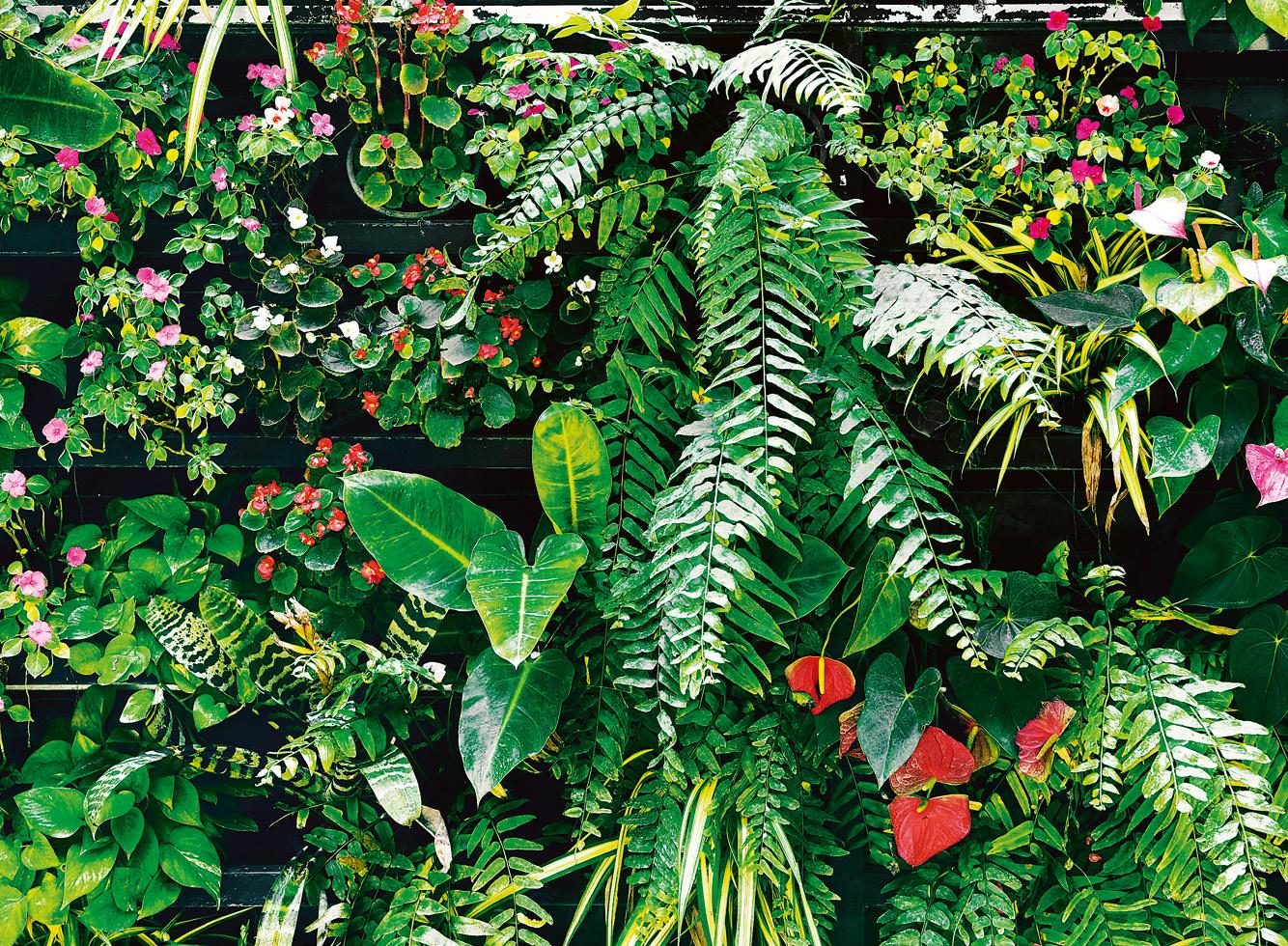
14
TAKE
ACTIon
15
hoW CAn WE CLASSIFY LIVIng ThIngS?
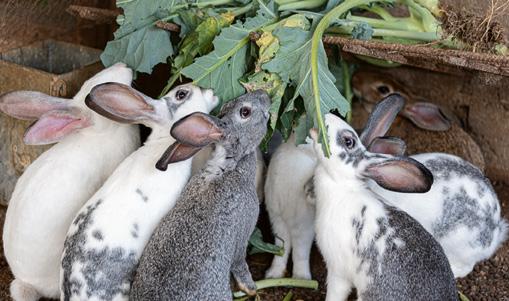
Characteristics of living things
WHAT do you NEeD To knOW To TaKe aCTIOn? ES hIng’ MEAn?
1
2 Classifying living things
hoW CAn WE CLASSIFY pLAnTS?
Characteristics of plants
3
WhAT ArE pLAnTS LIKE?
hoW Do pLAnTS InTErACT AnD rEproDUCE?
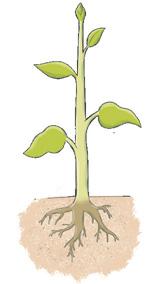
Nutrition in plants
4 Classifying plants
5
hoW Do pLAnTS gET nUTrIEnTS AnD EnErgY?
6 Interaction and reproduction in plants

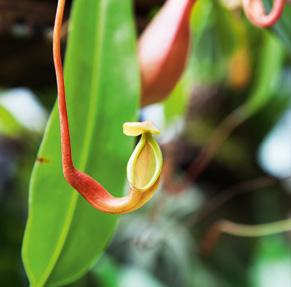

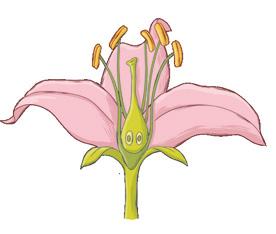
15
THINK WhAT DoES ‘LIVIng ThIng’ MEAn?
1 Look, listen and read. Living things perform three vital functions:
Nutrition
Living things eat and transform food into nutrients. Plants make their own food.
Interaction
Living things react and adapt to the world around them.
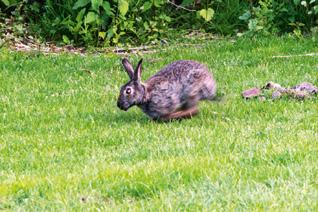
2 Match each vital function to a sentence in your notebook.

a) We come from other living things.
b) We react to things that happen.
reproduction
Reproduction
Living things can produce similar living things.
interaction
nutrition Your turn!
c) We need food to live.
T h E ro B oTIC I n SECTS CASE
1. The brown beetles eat plant waste.
2. The silver beetles don’t eat!
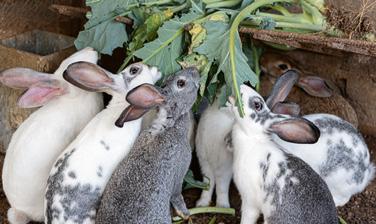
3.The silver beetles stop when they have no energy.




















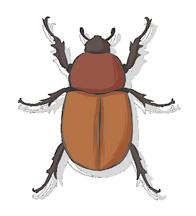
4.The brown beetles lay eggs.
1. They perform the nutrition function!

They are living things!
5.The silver beetles don’t lay eggs. WhAT YoU
LEArnED
All living things perform three vital functions.
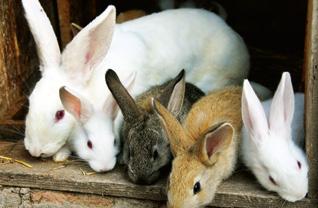
16
How many living things can you name? What do all of them have in common? Characteristics of living things 1
ChECK
NOW I KNOW…
How many types of living things do you know?
Where do they live?
1 Look, listen and read. We can classify living things into animals, plants or other living things, like fungi or bacteria.







Living organisms
Other Plants
bacteria

protozoans

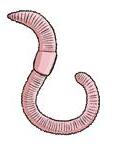
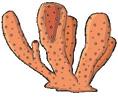



2 Classify these into plants, animals or other living things.
daisy pine tree
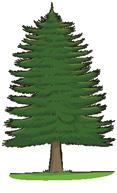

jellyfish mushroom

Animals
leopard algae

3 In pairs, choose a living thing. Then, ask yes or no questions and guess.

algae fungi ChECK
Yes, it is.
Is it an animal? Has it got legs?
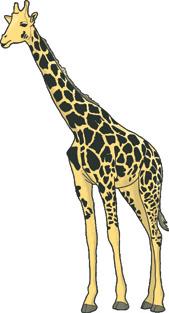
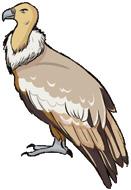
Yes, it has!
4 Make a list of ten living things. In pairs, compare your lists and classify them into plants, animals or other living things.
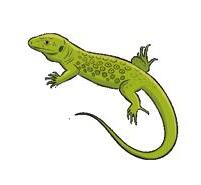




NOW I KNOW…
Many plants, animals and other living things share our planet.
17
hoW
2
Classifying living things
CAn WE CLASSIFY LIVIng ThIngS?
THINK
WhAT YoU LEArnED
Characteristics of plants 3
THINK WhAT ArE pLAnTS LIKE?
Have all plants got the same parts?
1 Look, listen and read.
Usually plants are green, they don’t move, they perform photosynthesis and some have got flowers.
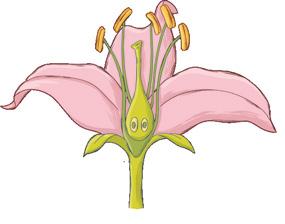

Parts of a plant
Leaves
They perform photosynthesis. They can have different shapes.
Stem
It supports the leaves and keeps the plant straight.
strong, hard stem (trunk)
thin, flexible stem

Roots
They fix the plant in the ground and absorb water and mineral salts.
2 Explore. Look for a plant you like. Then, draw it and label its parts.
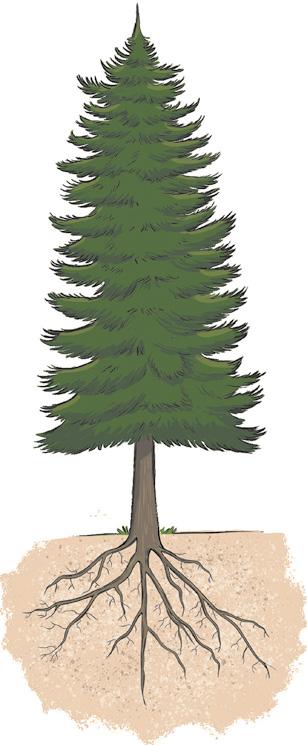
3 In pairs, compare your drawings. Share your ideas with your classmates.
a) Have all plants got the same parts?
b) How are they similar? How are they different?
c) Do you often see this plant?
d) Which plants do you want to grow in your school?
NOW I KNOW…
Different parts of a plant perform different functions. All of them are important!
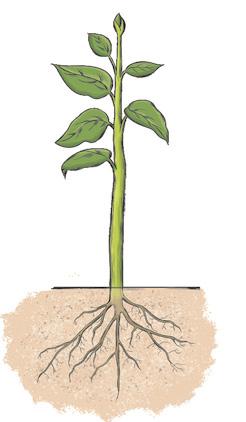
Corolla. Made of petals.
Flowers
Flowers help plants to reproduce.
Stamens. They produce pollen.
My plant has got stems.
It hasn’t got flowers.
18
ChECK WhAT YoU LEArnED
Calyx. Made of sepals. Pistil
Classifying plants
hoW CAn WE CLASSIFY pLAnTS?
THINK
How many different plants do you know?
1 Look, listen and read.
Plants with flowers and seeds
Types of plants
Plants without flowers or seeds
2 Look at these plants and classify them.
ivy grapevine orange tree ficus
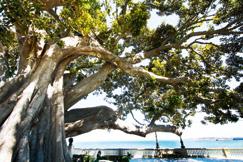
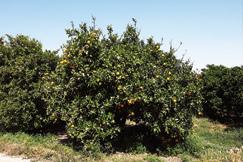

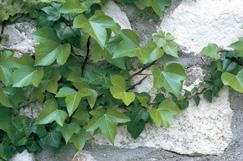
3 Choose a plant and guess with a classmate.
Has it got seeds/flowers? Yes, it has!
4 In pairs, write a riddle about a plant, like in the example.


I have got a long stem. I have got yellow petals. People eat my seeds. What am I?
ChECK WhAT YoU LEArnED
NOW I KNOW…
Classifying plants can help us protect them.
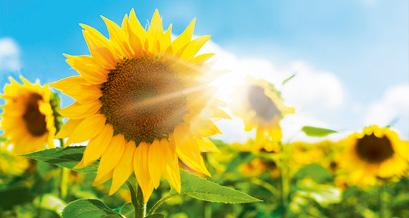

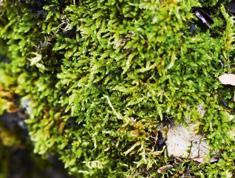



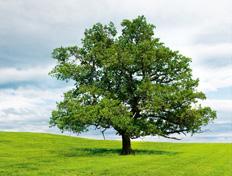
19
4
Oak trees make seeds inside a fruit.
Fir trees produce seeds that aren’t inside a fruit.
Ferns make spores under their leaves.
Mosses produce spores on thin stems.
Fir tree Ferns Mosses Oak tree
Can plants eat or breathe?
1 Look, listen and read. Plants make their own food. They use light, minerals and carbon dioxide.
Nutrition in plants
1. The roots absorb water and minerals from the soil.
3 The leaves use sunlight to transform substances into nutrients. This process is called photosynthesis.

p LA n T, MAKE Yo U r F oo D!
2. The leaves absorb carbon dioxide.
4. Plants produce and release oxygen during photosynthesis.
5. Plants respire. They take oxygen and release carbon dioxide.

1 Help this plant make its own food. Put the steps in order.
ROOTS: absorb water and minerals from the soil.
LEAVES: release carbon dioxide from photosynthesis.
STEM: transports water and minerals to the leaves.
LEAVES: use light to turn everything into food.
LEAVES: absorb carbon dioxide from the air.
Go to ‘I'll tell you in a moment’ at anayaeducacion.es to learn about the importance of plants.
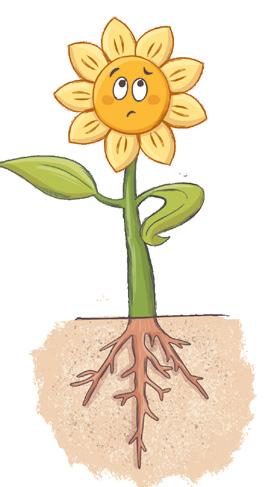

2 Discuss with your partner:
a) Have you got any plants at home?
b) How do you take care of them?
c) Do all plants need the same things?
I have got two plants at home.
NOW I KNOW…
Plants perform the nutrition function.
20 5 3 2 4 1
hoW Do pLAnTS
5 Nutrition in plants
THINK
gET nUTrIEnTS AnD EnErgY?
respiration carbon dioxide photosynthesis nutrients carbon dioxide minerals oxygen water oxygen solar energy ChECK WhAT YoU LEArnED
Computational thinking
THINK
Do plants move? Can they have baby plants?
2
Plants react to the changes around them.
The plant grows and forms flowers.

The pollen reaches the pistil of a flower.
1 2 3 4 5 3 ºC 20 ºC


The seed falls to the ground. Each seed becomes a new plant.
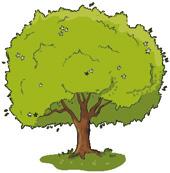
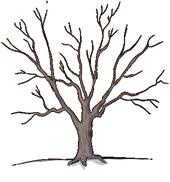

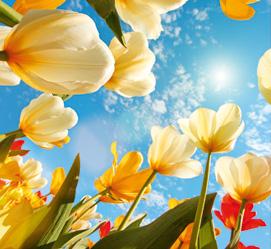
Match the type of interaction in the pictures to the right sentence.
The pistil changes into a fruit. Seeds form inside.
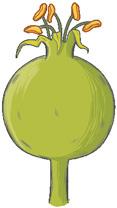


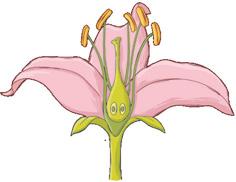
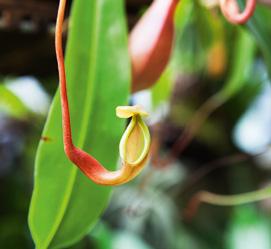
a) They have got spikes for protection.
b) They turn to the sun for more light.

c) They close their leaves when an insect touches them.
3 Write sentences about reproduction in plants. Read them to a classmate. They have to say ‘True’ or ‘False’.
ChECK WhAT YoU LEArnED

21
1 2 3
hoW
1 Look, listen and read. 6
Do pLAnTS InTErACT AnD rEproDUCE? Interaction and reproduction in plants
Interaction in plants Reproduction in plants
The pistil changes shape.
Plants also perform the interaction and reproduction functions.
NOW I KNOW…
MY ViSUAL SUMMARY
Living things
We can classify them into
They perform the three vital functions: nutrition, interaction and reproduction
I’m an animal. I eat other living things.
plants animals other living things
They are green and fixed in the ground.
Plants
They make their own food. They have got roots, a stem and leaves.
Parts of a plant


Flowers
This is the reproductive system of many plants.

Leaves

They perform photosynthesis.
Stem
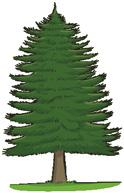
It supports the leaves and keeps the plant straight.
Roots
They fix the plant in the ground and absorb water and minerals.
corolla
My senses detect the grasshopper. I react by sticking out my tongue out.

pistil
stamens calyx
Classifying plants
Plants with flowers and seeds
Plants without flowers or seeds

The seeds aren’t inside a fruit. The seeds are inside a fruit.

22
Mosses
Ferns
Nutrition in plants
The roots absorb water and minerals from the soil. These substances travel up the stem to the leaves.


The leaves absorb carbon dioxide. The leaves use sunlight to transform substances into nutrients. This is called photosynthesis. Plants produce and release oxygen during photosynthesis.

Plants respire . They take oxygen and expel carbon dioxide.
Interaction in plants
Plants detect what is happening and react to changes
You´re trapped!
Reproduction in plants

The pollen reaches the pistil of a flower.
The pistil changes shape.
The seeds fall to the ground. Each seed becomes a new plant. The plant grows and forms flowers.
The pistil changes into a fruit. Seeds form inside.


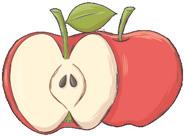

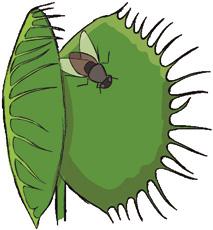
23
solar energy carbon dioxide carbon dioxide oxygen oxygen minerals water
PHOTOSYNTHESIS nutrients RESPIRATION
1 2 3 4 5 1 2 3 3 2 1
WhAT hAVE I LEArnED?
1 How do scientists classify new living things? Choose and explain.
a) They compare them with other living things and group them with similar living things.
b) They put them into smaller groups.
c) They make a new group.
d) They classify them without any criteria.
2 Say how these things are similar or different.
a) A fir tree and ferns.
b) A fir tree and an oak tree.
3 Match the function with the words from nutrition in plants.
a) The roots absorb it from the soil.
b) They absorb carbon dioxide.
c) Plants produce it when they perform photosynthesis.


d) The leaves use it to transform substances into nutrients. leaves light oxygen water
4 Complete the sentences:
a) Apple trees produce delicious ••• with ••• inside.
b) Ferns and ••• don’t produce seeds or ••• .
c) Some plants, like pine trees, don’t produce attractive •••. Their ••• are shaped like needles.

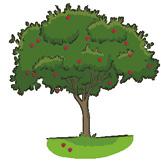





5 Make sentences with these words.
a) Senses, react, fixed, movement.
b) Oxygen, respire, living things, photosynthesis, life.
6 What do plants use light for?
7 Classify these living things.
8 Imagine one flower of a plant has got 1 pistil, 4 stamens and 8 petals. Calculate.
a) How many petals are there in 13 flowers?
b) How many stamens are there?
c) All the flowers become fruits, apart from one. How many fruits are there?
9 Draw two plants reacting to changes in the environment. Explain.
10 Investigate three types of fruit. What are their seeds like? Draw them in your notebook.
Don’t forget to complete your photo album at anayaeducacion.es.

Traffic lights. Apply this colour code to each activity in your notebook.
I knew the answer.
I needed help.
I couldn’t answer the question.
24
PORTFOLiO
bacteria fungi plants algae 1 2 3 4 8 7 9 5 6
Design your school garden! Help people understand why plants are important.
1 Think of three to five plants near you. Look for information and photos of each plant. Use these questions as a guide.
a) Where does it live in nature?
b) What does it look like?
c) How does it reproduce?
d) Has it got any special characteristics?
e) Does it provide food, materials or medicines?
Some ideas
• Plants give us oxygen, filter the air and improve the environment.
• Plants provide food, materials and medicines.
2 Draw a map of the school. Design your garden to help protect the plants on your list. Use pictures and bright colours.

3
Do you think plants are boring now? Copy and complete the ‘Before, I thought…’, ‘Now, I think…’ organiser with your thoughts.

Before, I thought… Now, I think… Reasons
What did I think about plants before?
hoW hAVE I LEArnED?
What do I think now? Why did my opinion change?
1 Some things in this learning experience are easy to learn and some things are difficult. Write the three most difficult things to learn and explain why in your notebook.
2 You know more about living things now. What living things from the learning experience do you find interesting or strange? Explain. Say what other things you want to learn about them.
Most difficult to learn Reasons
25
LOOKING AFTER NATURE!
When one part of an ecosystem disappears, the entire ecosystem suffers the consequences.


WHAT DO YOU THINK?
What living and non-living thigs are there in the picture?

How can humans damage
WHAT Is GOING On arOUND you?
All living things depend on other living things. Squirrels need trees to live in and humans use many natural resources.

WHAT cAN you do To HElp?
Create a wall display about a real ecosystem and how to protect it.
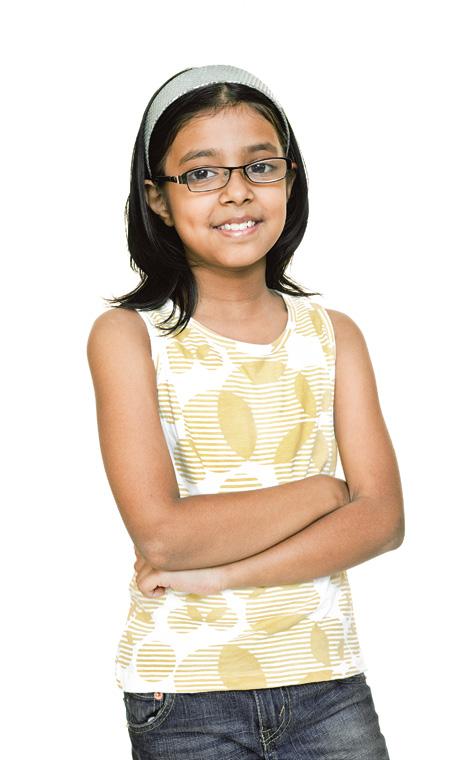
44 3 15
TAKE ACTIon
wHaT do you NEeD To knOW To TAkE aCTIOn?
Ecosystems
1
HoW Do LIVInG THInGS InTErACT WITH THE ECoSYSTEM?
2
Relationships in ecosystems
WHErE Do LIVInG THInGS LIVE?
Rocks
3
WHAT roCKS SHApE THE rELIEF?

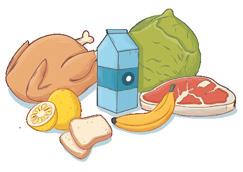
4 Relief
5 Types of ecosystems in Andalucía
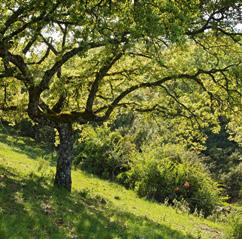
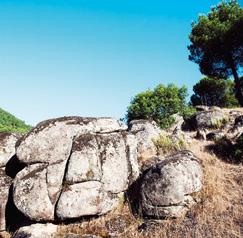
HoW Do HUMAnS InTErACT WITH ECoSYSTEMS?
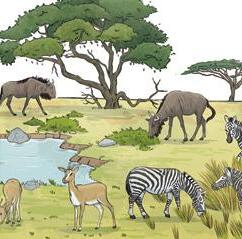

6
Using ecosystems
WHAT ArE THE non-LIVInG THInGS In An ECoSYSTEM LIKE?

Changing ecosystems
7

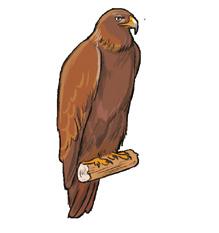
HoW CAn WE TAKE CArE oF ECoSYSTEMS?
8 Protecting ecosystems
WHAT ArE THE MAIn ECoSYSTEMS In AnDALUCÍA?
HoW Do WE DAMAGE ECoSYSTEMS?
45
WHErE Do LIVInG THInGS LIVE?
Can living things exist without their environment?
1 Look, listen and read.
An ecosystem is all the living things in a place, and the environment where they live.
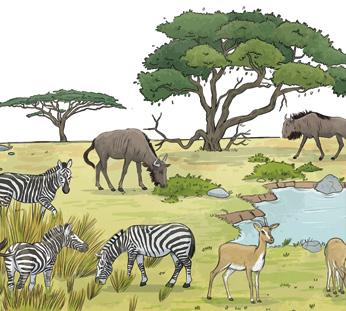

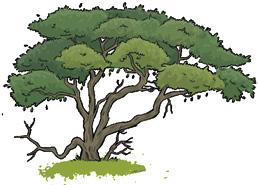

Living things interact with the environment and with each other.
An ecosystem consists of living things

the relationships between all these elements
2 Look at the pictures above and answer.
a) Name the living things in the ecosystem.
b) Name the elements in the environment.
c) What non-living things do these living things need?

In pairs, choose a living or a non-living thing. Then, ask yes or no questions and guess.
zebra water air

snake tree sun
grass eagle rock
NOW I KNOW…
Have you got fur/legs/wings/ beak/leaves?
Are you big/ small/green/hot/ cold/hard/soft?

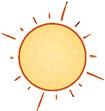
Animals, plants and other living things cannot live alone. They all depend on other living things.
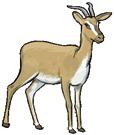

Yes, I have. / No, I haven’t.
Yes, I am. / No, I’m not.
CHECK WHAT YoU LEArnED
3
1 Ecosystems 46
THINK
wildebeest grasses gazelle acacia zebra air soil sun water
non-living things
Relationships in ecosystems
HoW Do LIVInG THInGS InTErACT WITH THE ECoSYSTEM? 2

How do living things interact with other living things?
1 Look, listen and read. There are different types of relationships between the living things in an ecosystem. The most important ones are feeding relationships.
Food chains represent who eats who in an ecosystem.
Plants are food for the grasshopper.

The grasshopper is food for the lizard.
The lizard is food for the eagle.
1 Look and do the activities.
Squirrels live in trees.
Materials
• A ball of yarn • Cards with living and non-living things
Ants build anthills in the soil. Bees take pollen from one flower to another.


Squirrels eat fruit from trees.
Squirrels and birds drink water from the pond.
Plants use light to make food.
a) Copy and colour the pictures in your notebook. Read the clues and draw lines to connect them.
b) Classify them into living and non-living things.
c) Show the relationships in this ecosystem. You need a ball of yarn and cards. Go to ‘We are all connected’ at anayaeducacion.es

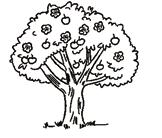

Go to ‘I'll tell you in a moment’ at anayaeducacion.es to learn more about the relationships between the living things in an ecosystem.

Birds eat insects (ants and bees).

Plants get water and mineral substances from the soil.


Squirrels are living things.


CHECK WHAT YoU LEArnED
NOW I KNOW…
All the living things in an ecosystem interact.
47
rYTHI
THINK EVE
n G IS Conn ECTED
squirrel ant pond tree soil bee sun bird
Your turn!
WHAT ArE THE non-LIVInG THInGS In An ECoSYSTEM LIKE?
THINK
What non-living things can you find in nature?
1 Look, listen and read. Some of the non-living things in an ecosystem are the air, the sun, climate and rocks. Rocks form the ground we live on. Rocks have got different shapes, colours and sizes. They appear in different ways in nature.
Types of rocks
It is very hard. Its components are black, white and pink.
It is hard. It is usually grey or black. It has got layers.
It is a volcanic rock. It is very hard. It can be grey or black.
2 Read the definitions and match them to the correct rock.

a) It is usually grey or black. It has got layers.
b) It is very hard. It has got three different components.
c) It can contain fossils.
d) It is a volcanic rock and it is very hard.
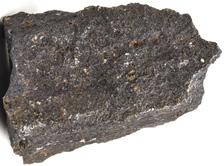
What are the differences between marble and obsidian? Look at the pictures and describe them.


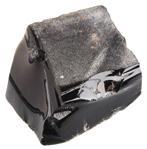
What is marble like?
Marble is white/black. It is hard/medium-hard/soft.
It is medium-hard. It can be white, grey or brown.

3 Rocks 48
3
Granite
Slate Basalt Limestone
marble obsidian
basalt
slate
limestone granite
Rocks contain minerals. There are many different types of minerals. They can have different shapes, brightness, hardness and colours.


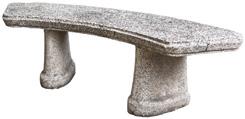
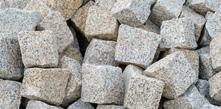
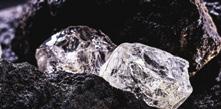


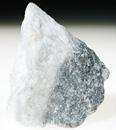

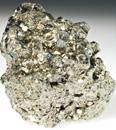
1 Look and match the properties to the correct mineral.

a) It is very hard.
b) It has got geometric shapes.
c) It is shiny.
d) It is soft.
e) It is yellow.

2 We can make objects using rocks and minerals. Look at the pictures and complete the sentences with the correct words.
a) We can use ••• for ••• .
b) We can use ••• for •••
c) We can use ••• for ••• .
d) We can use ••• for ••• .
Minerals and rocks
Uses
Choose a mineral or a rock. Then, ask questions and guess.

Is it smooth/rough?
It’s green/yellow/black.
Is it hard/soft?
It shines. / It doesn’t shine. CHECK
We can find different types of rocks and minerals in nature.
49 ro CKS A n D MI
E
n
r ALS
4
WHAT YoU LEArnED
pyrite diamond sulphur talc quartz furniture sculpting jewellery building slate limestone diamond granite Your turn!
NOW I KNOW…
WHAT roCKS SHApE THE rELIEF?

THINK
Why are rocks so important?
1 Look, listen and read. The different types of rocks in an ecosystem determine the landforms in the area. Relief is all the landforms in an area.
Different rocks form different types of relief
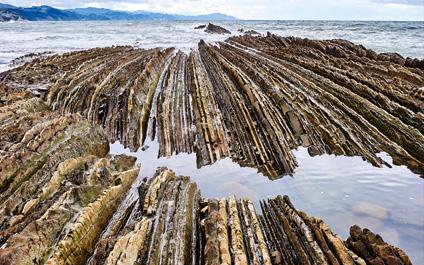
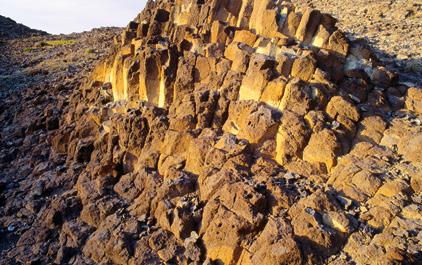
We can find granite in mountains. It usually forms big round blocks.



We can also find smaller blocks of granite. They’re formed by the action of cold.
volcanoes.
4 Relief 50
Granite
Basalt
Slate
The rocks above the water come from
Basalt can form columns.
Slate forms landscapes of thin layers of dark rock.
Slate can form layers with other rocks, like limestone.
Paste or draw three pictures of granite, basalt, slate and limestone reliefs in your notebook. Write a brief description of the landscapes.

• Now, choose one and say why you like it.
Basalt landscapes are my favourite ones.
Why do you like them?
Because they are beautiful.
NOW I KNOW…
Rocks shape the relief and determine the type of ecosystem.

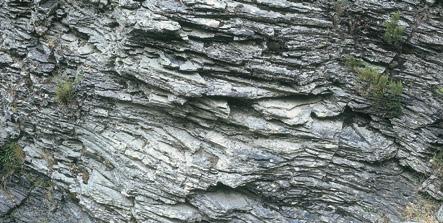
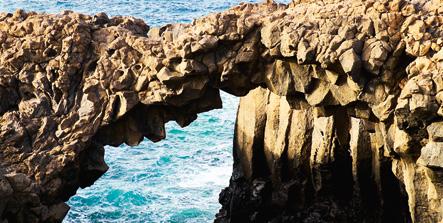
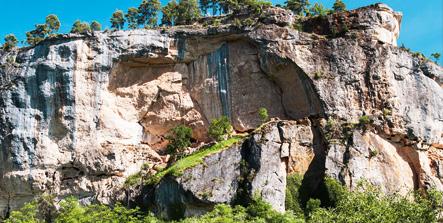
CHECK WHAT YoU LEArnED
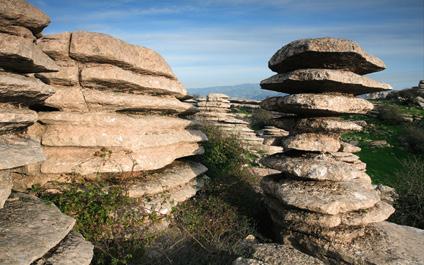
51 2
Match the rock with the type of landform.
Limestone forms thick layers. Water erodes them, forming landscapes.
Limestone
3
1 3 2 4
Limestone can create huge vertical cliffs.
basalt
slate limestone
granite
5 Types of ecosystems in Andalucía
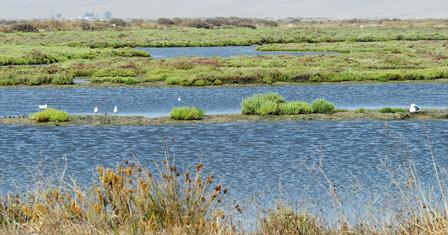
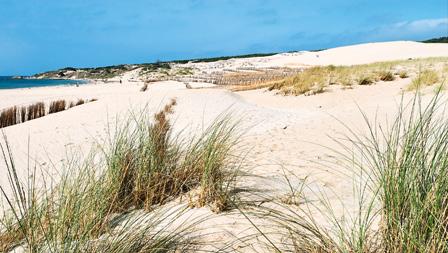
WHAT ArE THE MAIn ECoSYSTEMS In AnDALUCÍA?
THINK
How many different ecosystems can you identify near you?
1 Look, listen and read.
Ecosystems can be terrestrial or aquatic. In natural ecosystems, there is no human intervention. In artificial ecosystems, humans change the environment.
Types of ecosystems in Andalucía
2
Plants: holm oaks, cork oaks, rockrose and rosemary.
Animals: insects, dormice, rabbits, deer, wild boars, birds and lynx.

Marsh
Plants: rushes and reeds.
Animals: aquatic birds (ducks and cranes), fish and invertebrates.

Plants: glasswort, houseleek and sandwort.
Animals: aquatic birds, fish, jellyfish, crabs, starfish, sea urchins and octopuses.

Plants: holm oaks and pasture.
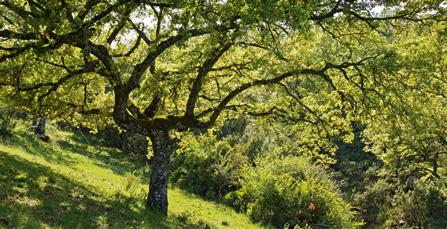

Animals: birds of prey, reptiles, amphibians, and farm animals, such as pigs.

Choose a forest, a marsh, a beach or a dehesa near you and draw it. Name the animals and plants you can see. Draw a food chain. Then, describe it to a classmate.
The animals/plants in this ecosystem are rabbits/ crabs/rushes/pastures...

52
Dehesa
Beach Mediterranean forest
TY p ES o F ECo SYSTEMS
We classify ecosystems by the type of environment. Ecosystems can be terrestrial or aquatic.
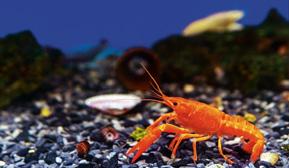
1 Look at the pictures and answer the questions.
A terrestrial ecosystem: a forest.
An aquatic ecosystem: a pond.
a) Draw a food chain for each ecosystem. Include at least one plant and two animals.
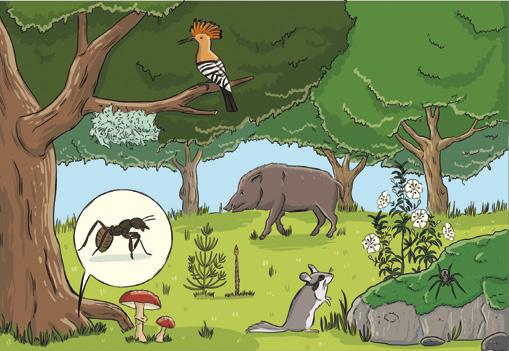
b) Why are those ecosystems terrestrial and aquatic? Explain your answer and describe them to a classmate.
c) Look at the pictures below. Do the animals live in terrestrial or aquatic ecosystems?
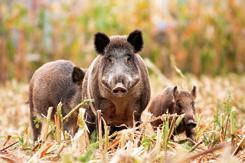

The animals in aquatic ecosystems live in water.

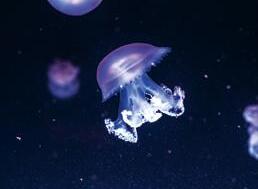
turkey

spider

squirrel
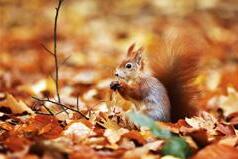
lobster
seal

lynx

squid
Go to ‘Terrestrial and aquatic ecosystems’ at anayaeducacion.es

CHECK WHAT YoU LEArnED
NOW I KNOW…
There are many different ecosystems, like rivers, ponds and forests.
53
wild boar jellyfish
Your turn!
HoW Do HUMAnS InTErACT WITH ECoSYSTEMS?
THINK
What things can you get from nature?
1 Look, listen and read.
Natural resources are the things that we use from nature.

What do ecosystems give us?
2
Food
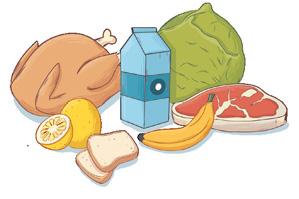
We get food from farming and fishing.
Water Land
We need water to drink and for sailing, irrigation, washing and energy.



Raw materials
We use rocks, wood, wool, cotton and other materials to make things, and for medicine and energy.
What do we use these resources for?
sunlight
cotton
sheep
We use land for building houses and roads, and for farming.

Well-being
We use ecosystems for exercise. We admire their beauty, and we do activities in them.
What do we use cotton for?
We use cotton for making clothes.
oil
lettuce
trees gardens
Ecosystems can be urban, like cities. Name five living things you can find in an urban ecosystem.
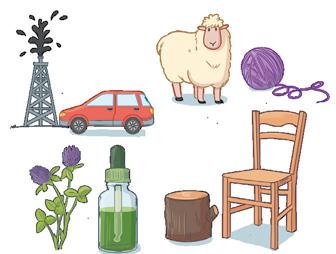
3
6 Using ecosystems 54
MY SUSTAI n ABLE CITY Co M p ETITI on !
I take care of forests!
Hi! I’m Esther. I’m a forest engineer. I make plans for using natural resources without damaging the environment. I plan how to prevent fires, collect and use wood, etc.

I build sustainable cities!
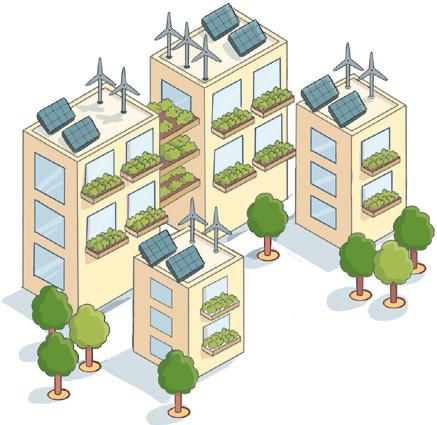
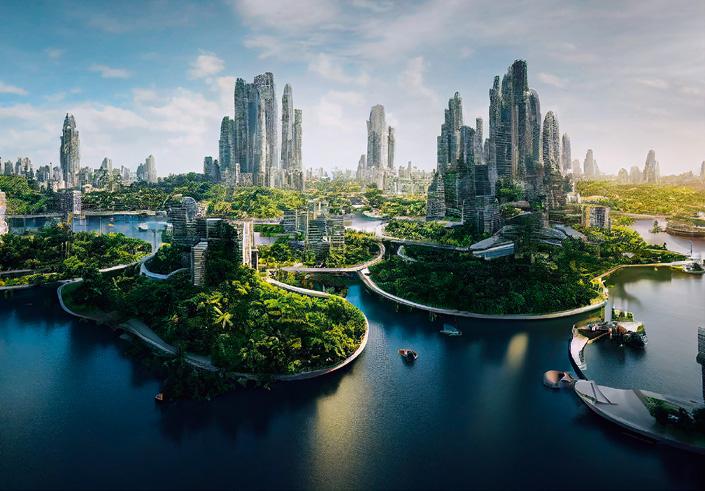
Hi! I’m Roberto. I’m a town planner. I make the urban ecosystem a nice place for living things. I plan where to put houses, roads, parks, offices, etc.

Step 1
Imagine you are Esther or Roberto.
What can you do to improve your city?
Step 2
What natural resources do you need to make the changes?
Represent your ideas. You can use modelling clay, drawings, videos, anything you want!
Step 3
Present your sustainable city to your classmates. Vote for your favourite. Build the best project!
CHECK WHAT YoU LEArnED
NOW I KNOW…
55
We get food, water, land, raw materials and well-being from nature. Your turn!
HoW Do WE DAMAGE ECoSYSTEMS?
THINK
Are there any damaged ecosystems near you?
1 Look, listen and read.
When we take natural resources from the environment and use them, we change ecosystems.
We damage ecosystems when we…
… use all the resources. … cause pollution. … occupy lots of space.
When we consume resources too fast, they can’t recover. This is called over-exploitation.
Human activities pollute ecosystems with smoke, plastic, noise and light.

2 Match the sentences to the pictures in your notebook.
Cities, roads, industries and farms use lots of space. We don’t leave a lot for other living things.
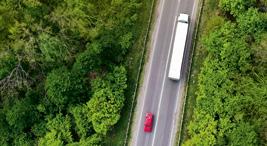
a) We consume coal too quickly. Ecosystems take millions of years to produce more.
b) We hunt animals and catch fish that are endangered.

c) We cut down too many trees. Trees take many years to grow.
d) We destroy the habitats of plants and animals when we build roads.
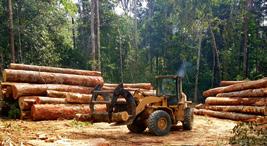
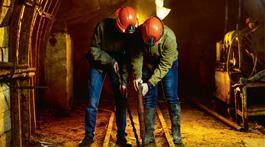

e) Toxic emissions from industry pollute the environment.

f) The light and noise from campsites disturb animals.

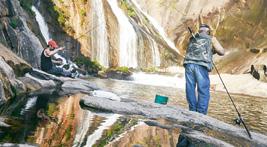
7 Changing ecosystems 56
1 4 5 2 3 6
Our ecosystems are in danger!
Air pollution is a big problem! The Earth’s atmosphere and the seas are also getting warmer. This is called global warming. All these things are causing climate change.
Some species of living things are extinct. Other species, like the Greek tortoise in Almería and Murcia, are endangered. Fires, uncontrolled urbanisation and unsustainable farming methods are some of the causes.
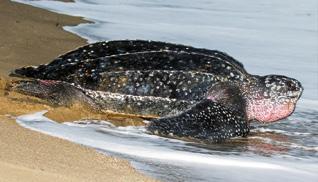
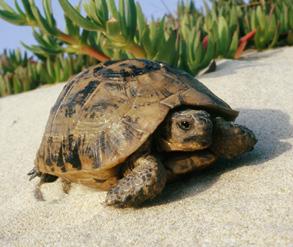
1 Look at these endangered animals. Match each description to the correct animal and the correct question.
I
Humans take my horn and use it for medicine.
I
What animal is it?
Where does it live? Why is it endangered?

2 Make cards with the pictures of the animals and the information about them. Then, tell your classmates about them.

3 Brainstorm ideas and make a poster with five tips for reducing damage to the environment.
See worksheet 2 from the ICT Plan at anayaeducacion.es to learn how to create digital content.

NOW I KNOW…
Human activities cause problems in many ecosystems, and some are disappearing.
TIPS!
1) Stop polluting!
2) …
3) …
CHECK WHAT YoU LEArnED
57 I D on ’T WA n T To DISA pp EA r !
Pacific Ocean Polar bear Arctic
suffocate from eating plastic in the sea.
can’t hunt for food because the ice is melting.
Javan rhinoceros Indonesia
1 2 3
Leatherback turtle
Your turn!
THINK
What do you do to protect ecosystems?
1 Look, listen and read. We need to protect resources and ecosystems. We should use natural resources carefully. Everyone can help by living more sustainably.
Tips for living more sustainably
Recycle
Separate plastic, glass, paper and cardboard for recycling.

Save water


Have a shower, not a bath. Turn off taps when you aren’t using them.
Reuse
Objects made from plastic and other materials.
Save energy

Turn off lights and appliances when you aren’t using them.
Respect nature
Respect animals and plants when you visit the countryside. Don’t leave rubbish and never start a fire.
2 Choose the correct action for a sustainable lifestyle.
1) When I want some water in a restaurant, I…
a) ask for tap water in a jug.
2) In the toilet, I…
a) throw tissues in the bin.
3) During my break, I…
a) leave my banana peel on the bench.
3
b) ask for bottled water.
b) flush tissues down the toilet.
b) throw my banana peel in the bin.
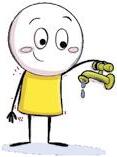

In pairs, make suggestions to take care of the environment.
Do you want to go to school by car?

No, I don’t. It isn’t good for the environment.
Then let’s go by bike!
Yes, that sounds great!
CAn WE TAKE CArE oF ECoSYSTEMS? 8 Protecting ecosystems 58
HoW
THE SUSTAI n ABILITY Co DE
Do you know this symbol? Gary Anderson designed it in 1971. It’s the international symbol for recycling. The three arrows represent the three steps of recycling: reduce, reuse and recycle.
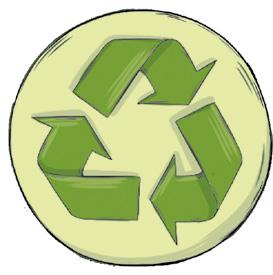
1 Find objects in your home with this symbol or look for objects on the Internet. Make a list of the objects you find.
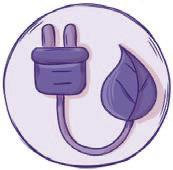
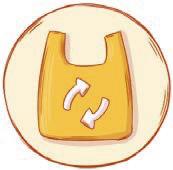




2 There are different logos for different sustainable actions. Look at the pictures and match them to their meaning.
3 Work in groups. It’s time to take action!
a) Brainstorm sustainable actions that you can take in class or around your school. For example:
• Recycle paper, cardboard and packaging.
• Collect toys and give them to charity.
• Turn off taps when you aren’t using them.
• Turn off lights when you aren’t using them.
b) Design a logo for each action. Keep them simple. People need to understand their meaning.
c) Put your logos around your classroom or school to help people be sustainable.
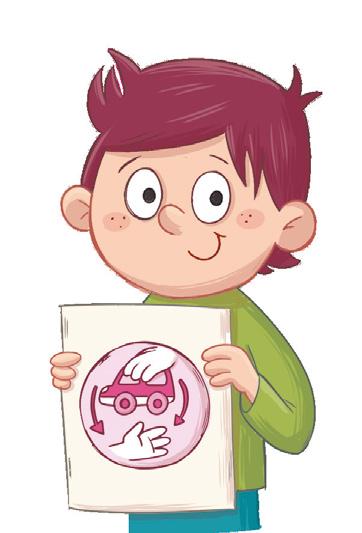
For help using ICT sustainably, see worksheet 5 from the ICT Plan at anayaeducacion.es.
NOW I KNOW…
We can do many things to live sustainably: recycle, reuse objects, save water, save energy and respect nature.
59
CHECK WHAT YoU LEArnED
Put rubbish in the right place. Use plasticrecycled bags.
bottles.plastic Use solar
1 3 2 4 A C B D
Reuse
energy.
Computational thinking
MY VISUAL SUMMARY
Ecosystems
An ecosystem consists of: non-living things, living things and the relationships between all these elements.




Non-living things: the air, the sun, climate, water and rocks.
Relationships: the main relationships are feeding relationships.
There are different types of rocks: granite, basalt, slate and limestone.




The rocks in an ecosystem determine the landforms.

60
Humans and ecosystems
food

land
Natural resources are things that we use from nature.



water

raw materials
We sometimes damage ecosystems when we use natural resources.
Using all the resources
Pollution from smoke, plastic, noise and light.
Occupying space
Separate waste for recycling
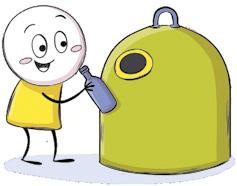
Save water
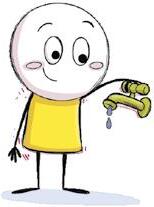
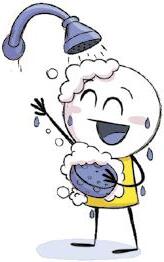
well-being
Extinction of species
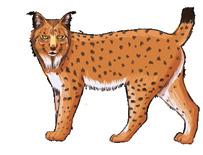
Global warming
Looking after ecosystems

Save energy

Give toys and clothes to charity

Reuse objects
Respect nature
61
PORTFOLIO
WHAT HAVE I LEArnED?
1 What is in the school ecosystem? Choose one answer.
a) The building, the playground, and the school’s furniture and objects.
b) The building, the playground, the school’s furniture and objects, and the people.
c) The building, the playground, the school’s furniture and objects, the people, animals and plants, the sun, the air, and the interactions between all these things.
2 Look at the pictures and describe two feeding relationships.
5 Describe three human activities that use these natural resources.
a) Water b) Rocks
c) Trees d) Land
6 Look at the picture and answer the questions.
a) Which things do not belong in this environment?
b) How do these things harm living things?
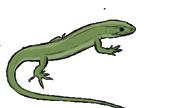



c) How can we remove pollution from this environment?
7 Match each type of damage to its causes. Suggest actions to prevent each type.
a) Air pollution.
b) Extinction of living things.
c) A lot of waste.
3 Guess the rock in the picture. What type of relief can this rock form?
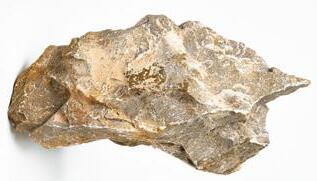
1) We occupy space and destroy habitats.

2) We use many resources and don’t recycle.
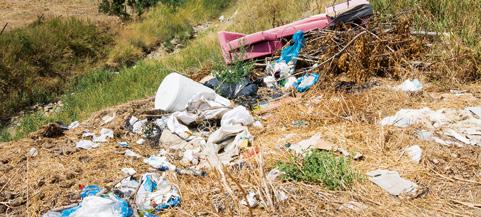
3) Cars cause toxic emissions.
Don’t forget to complete your photo album at anayaeducacion.es

4 Imagine all the plants on Earth disappear. How does this affect the ecosystems? Answer the questions. Explain your answers.
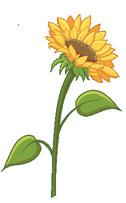
a) What happens immediately?
b) What happens months later?
c) What happens years later?
Traffic lights. Apply this colour code to each activity in your notebook.
I knew the answer.
I needed help.
I couldn’t answer the question.
62
Research a real ecosystem and make a wall display about how to protect it.
In groups, follow these steps. Step 1. Choose an ecosystem like the ones in the pictures.
Step 2. Look for pictures and information about it.
• Which countries have this ecosystem?


• What living things live there? Include animals and other living things.

• Is this ecosystem in danger?
• How can we protect it?
Step 3. Use the pictures and information to make a colourful wall display.
2 Copy and complete the ‘Before, I thought…’, ‘Now, I think…’, organiser in your notebook.


Before, I thought…
What did I think about ecosystems before?
HoW HAVE I LEArnED?
1 Copy the diagram. Evaluate yourself for each category. Connect the dots to make a pentagon. A big pentagon means you are learning a lot!
Now, I think… Reasons
What do I think now? Why did my opinion change?
2 Which things did you find surprising or interesting? Explain. How do these things improve people’s lives?
63
1
1 1 1 1 1 2 2 2 2 2 3 3 3 3 3 4 4 4 4 4 5 5 5 5 5 Attention Group work
problems
of
Solving
Studying Quality
my work
LANDSCAPE GUARDiANS 6
I love the landscapes around me. We can cause the extinction of many living things. Let’s prevent it and take care of nature!
WHAT DO YOU THINK?
Do you think we can prevent damage to landscapes?
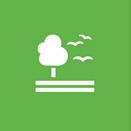

whaT Is goINg On arOUND you?

How can we stop animals and plants from disappearing? Our landscapes often suffer damage from fires, waste, using natural areas to build tourist facilities, etc.
WHAT cAN you do To HElp?

Detecting causes and finding solutions is a good way to help ecosystems.
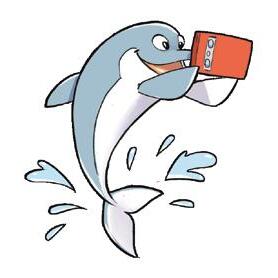

110
TAKE ACTIon
15
WHAT do you NEeD To knOW To TaKe aCTIOn?
1 Landscapes
WhAT ArE LAnDSCApES FAr FroM ThE SEA LIKE?
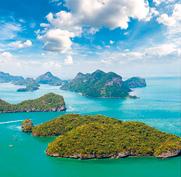
2 Inland landscapes
3 Coastal landscapes
WhAT ArE SpAIn’S InLAnD LAnDSCApES LIKE?
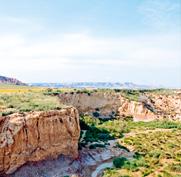
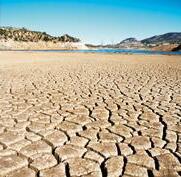
4 Inland Spain

5 Coastal Spain
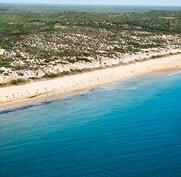
WhAT Ar SpAIn ISLAnDS LIKE?
6 Spain’s islands
7 Climate and landscape
WhAT MAKES AnDALUCÍA SpECIAL?

8 Relief in Andalucía
9 Taking care of landscapes
WhAT ArE LAnDSCApES?
WhAT ArE LAnDSCApES CLoSE To ThE SEA LIKE?
WhAT ArE SpAIn’S CoASTS LIKE?
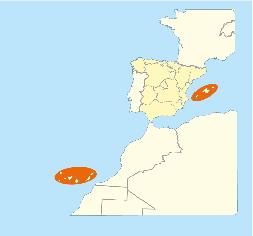
WhY Do WE hAVE ThESE LAnDSCApES AnD noT oThErS?
WhAT IMpACT Do pEopLE hAVE on LAnDSCApES?
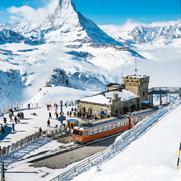

111
WhAT ArE LAnDSCApES?
What causes changes in landscapes?



1 Look, listen and read.
A landscape is a large area of land.
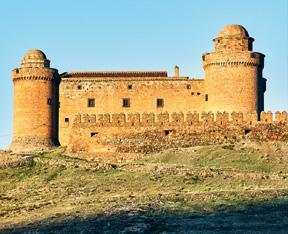

Landscapes change over time. There are two causes:
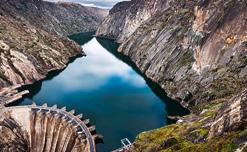

Natural changes: nature causes them
Earthquakes
Volcanic eruptions
Droughts
Erosion
Artificial changes: people cause them
2 Say if the sentences are true or false. Correct the false ones.
a) Landscapes never change.
b) When we cultivate the land, the landscape changes.
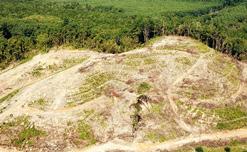
c) People change the landscape by causing volcanic eruptions.


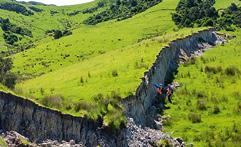
3 Are these changes natural or artificial?
An earthquake caused this.
112
1
Landscapes THINK
river castle mountain
Infrastructures Building Energy Deforestation
Building roads, railways and bridges.
Constructing towns and cities.
Building wind mills or dams to obtain energy. Cutting down trees to cultivate land.
4 Look, listen and read.
Classification of landscapes
Depending on human intervention
Depending on their proximity to a sea or an ocean
Natural landscapes Inland landscapes
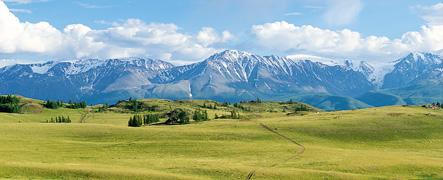
mountains
Artificial landscapes
plains
Coastal landscapes

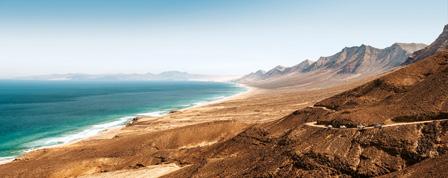
clifs
beaches
5 How do we know if a landscape is natural or artificial? Explain with a classmate.
Some artificial landscapes have got buildings.
6 Look at the picture and answer.
Natural landscapes haven’t got bridges.
a) Make a list of the natural and artificial elements.
b) How do the artificial elements affect the area’s fauna and flora?
Go to ‘I'll tell you in a moment’ at anayaeducacion.es to find a summary of these elements.
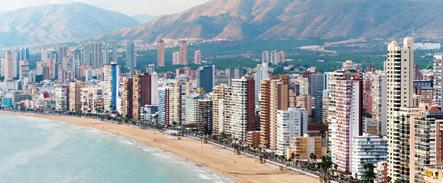
NOW I KNOW…
Nature and humans can change landscapes.

113
ChECK WhAT YoU LEArnED
People didn’t change them.
They are far from the sea.
People changed them.
They are close to the sea.
WhAT ArE LAnDSCApES FAr FroM ThE SEA LIKE?
Inland landscapes THINK
Do you know the names of any mountain ranges or mountains near you?
1 Look, listen and read. Relief is the set of different landforms. We can find these landforms in mountain and plain landscapes:

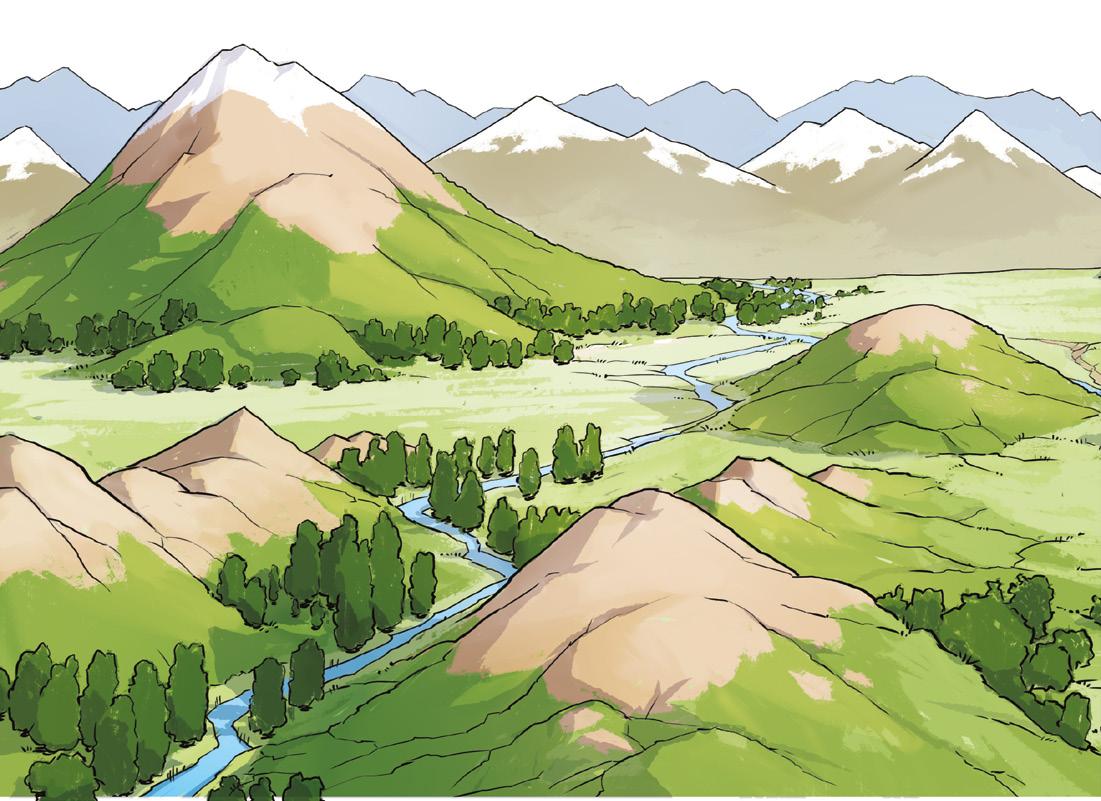
peak
Very high landform. It has got three parts.
slope foot
Mountain chain Group of mountain ranges.
Low, usually flat, landform between mountains. It normally contains a river.
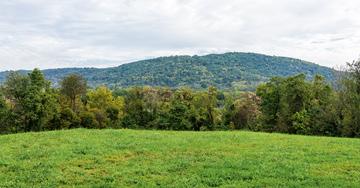
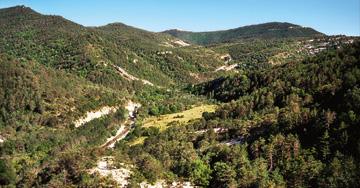
2 Match the names of the landforms to the numbers in the pictures.
Hill
High landform. It has got a rounded shape.
114
2
Mountain range Group of mountains.
Mountain
Valley
4 5 6 2 1
peak valley foot hill slope
What landforms can you identify in these pictures? Explain with a classmate.
It is a river basin.
It is lower than the land around it.
Area of land
a main river and its tributaries occupy.
1 Make a landscape. Use different recycled materials for the landforms. Then, show and explain it to your classmates.
Step 1. Choose a landscape.
Step 2. Think of all the elements you have to include and draw it.
Step 3. Use recycled materials to build your landscape in 3D!
NOW I KNOW…
Inland landscapes are far from the sea and contain landforms like mountains and plains.
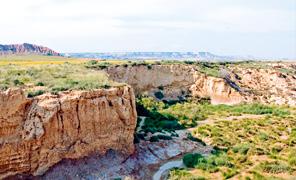
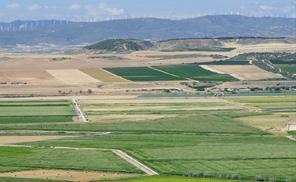

Material
• Glue
• Scissors
• Old newspapers
• Plastic bottles
• Cardboard
115
C r EATE A 3D LA n DSCA p E!
Go to the video of a balloon ride at anayaeducacion.es to understand landforms better.
Plateau High, flat landform.
Plain Wide, low, flat landform.
River basin
3
1 2 ChECK WhAT YoU LEArnED
Your turn!
Coastal landscapes
WhAT ArE LAnDSCApES CLoSE To ThE SEA LIKE?
THINK
Do you like going to the beach? Why are there different types of coastal landscapes?

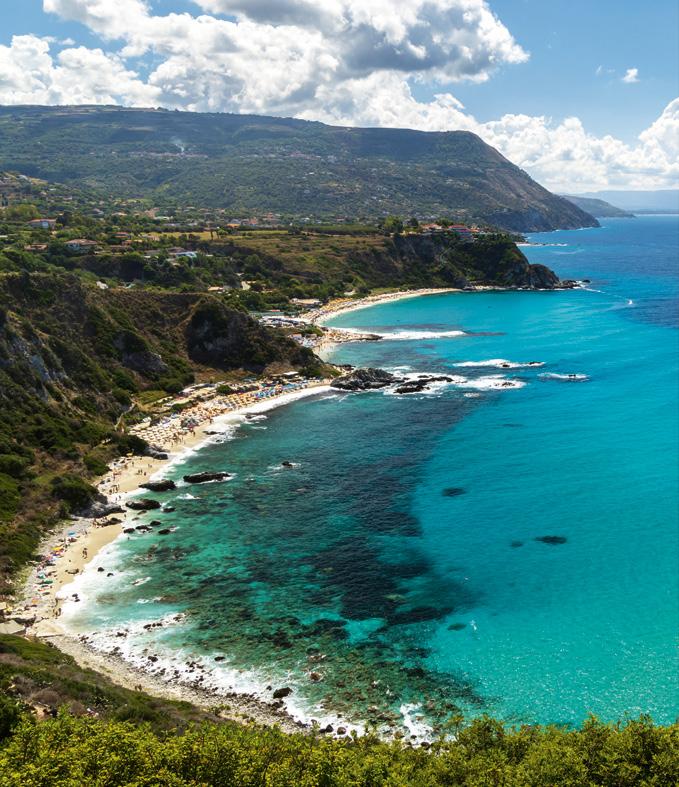
1 Look, listen and read. Different types of landforms form different coastal landscapes. We can find these landforms in coastal landscapes:
Cape Area of land that extends into the sea.
Gulf
Area of the sea that extends into the land.
Bay
Similar to a gulf, but smaller.
Isthmus
Peninsula Land with water on three sides.
Archipelago Group of islands that are close together.
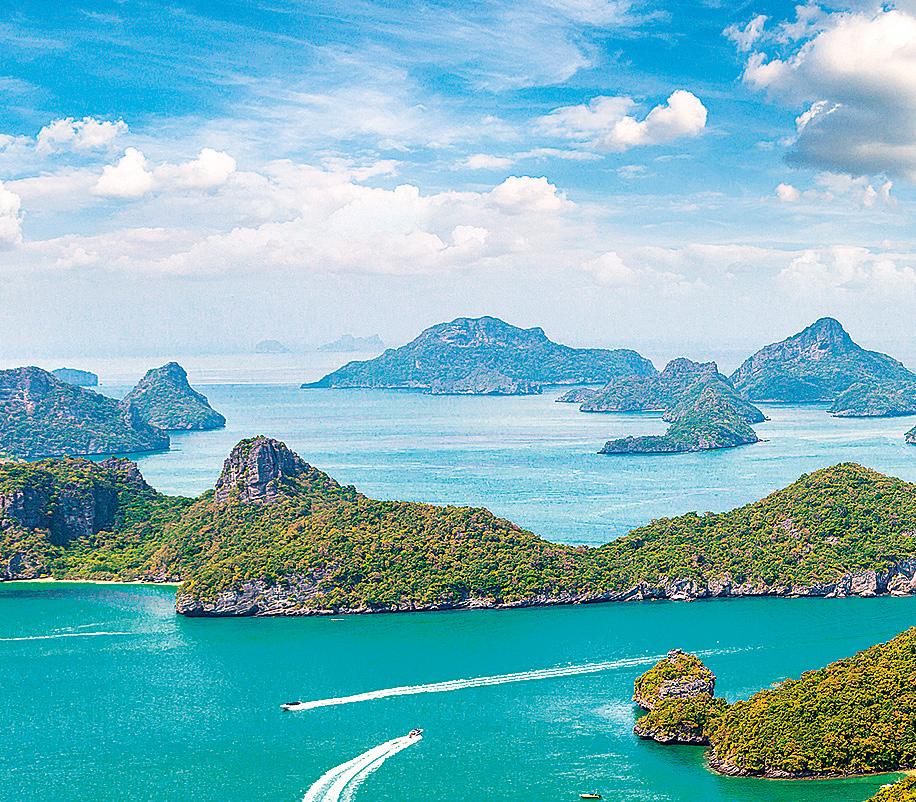
Island
Area of land with water on all sides.
2 Choose a landform from a coastal landscape. Describe it to a classmate and guess.
Yes, it is. / No, it isn’t.
3 Draw an archipelago. Invent the names of the islands and write them.
Is it an island?
116
3
4 Classify these landforms into coastal or inland landscapes.
peninsula archipelago river basin
gulf mountain range plateau hill
valley bay cape
Coastal landscape
5 What are the differences between inland landscapes and coastal landscapes? Which do you like the most? Tell a classmate.
Inland landscape
You can’t see the sea in inland landscapes.
My favourite landscapes are inland landscapes.
6 Look at the pictures and answer the questions.
a) Can you see the sea in picture 1? What does this tell you about the landscape?
b) What landforms can you recognise in picture 2?

c) What type of landscape does each picture belong to? Why?
W h AT IS MY E n VI ron ME n T LIKE?
1 Find information about your locality. Complete the sentences to answer the questions.
a) Do you live in an inland or coastal landscape? I live in ••• landscape.
b) What species of animals live there?
Where I live there are different animals: •••
c) What species of plants can you see?
Where I live there are different plants: •••
d) What can you do to protect that landscape?
To protect it, I can…
NOW I KNOW…
We can find landforms like capes, bays, islands and gulfs in coastal landscapes.

117 ChECK WhAT YoU LEArnED
1 2 Your turn!
WhAT ArE SpAIn’S InLAnD LAnDSCApES LIKE?
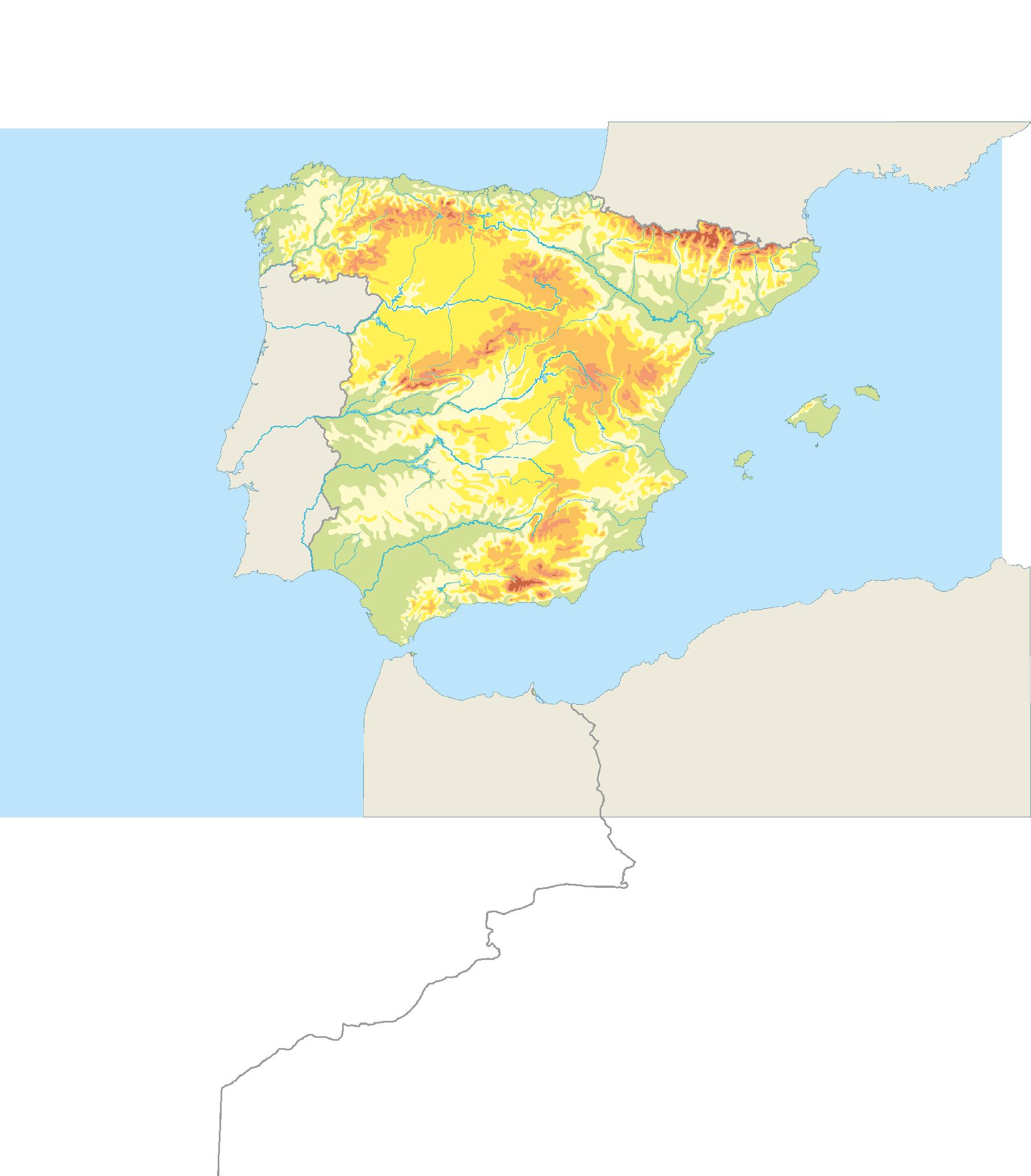
Where is the highest peak on the Iberian Peninsula? And in Spain? Say the names.
The Meseta
Most of Spain’s territory is on the Iberian Peninsula. The Meseta Central occupies a large part of the Iberian Peninsula.

The Sistema Central divides the Meseta into two parts: the Submeseta Norte and the Submeseta Sur.
The Montes de Toledo are in the Meseta.
Mountain systems around the Meseta
The Montes de León, the Cordillera Cantábrica (mountain chain), the Sistema Ibérico and Sierra Morena.
2 Look at the map and answer.
a) What mountain systems are on the edge of the Peninsula?
b) Between which mountain systems are the Depresión del Ebro and the Depresión del Guadalquivir?
c) What mountain chain is around the Meseta?
d) What two Submesetas divide the Meseta in two?
118 4 1
Inland Spain THINK
del Guadalquivir DepresióndelEbro CORDILLERA CANTÁBRICA P I R I SISTEMA IBÉRI C O S I S T E M A CENTRAL S I E R R A M O R E N A CORDILLERA SU B BÉ T I C A C O R D I LLERA PENIBÉTICA SUBMESETA NORTE SUBMESETA SUR MontesdeLeón MacizoGalaico Montes de Toledo Montes Vascos MESETA CENTRAL PORTUGAL ATLANTIC OCEAN C a n t a b r i a n S e a Mediterranean Sea Altitude (m) 3 500 2 000 1 500 1 000 700 400 0 0 100 200 km EUROPE AFRICA ASIA Equator
Depresión
3 Read the defintion and order the letters. What landforms do they refer to?
a) They separate Spain from France. (IPIORESN).
b) River basin to the north of the Meseta. (PÓIDSENRE LDE OBER).
c) Mountain system around the south of the Meseta. (ERRASI NAREMO).
River basins
The Depresión del Ebro and the Depresión del Guadalquivir are outside the Meseta.
ANDORRA
CordilleraCostero-Catalana

Mediterranean Sea
Your turn!
Mountain systems on the edge of the Peninsula
The Macizo Galaico, the Montes Vascos, the Pirineos, (separating the Peninsula from France), the Cordillera Costero-Catalana and the Sistemas Béticos, (consisting of two mountain chains: the Cordillera Subbética and the Cordillera Penibética).

n JoY T h E LA n DSCA p E
It is a clear example of a natural area where people changed the environment.
NOW E
1 Talk about the consequences for the fauna and flora.
We can’t smell all the flowers in spring!
I KNOW…
119 N E O S
FRANCE
In inland Spain we can find the Meseta, river basins and many mountain systems, like the Sistemas Béticos and the Pirineos. ChECK WhAT YoU LEArnED
Do you know the ski resort in Sierra Nevada? Have you visited it?
Coastal Spain
WhAT ArE SpAIn’S CoASTS LIKE?
THINK
Where is your nearest coast? What is it like?
, Look, listen and read.
The Cantabrian Sea, the Mediterranean Sea and the Atlantic Ocean surround the Iberian Peninsula. The coasts have got different names and characteristics:
The Galician Atlantic, Cantabrian and Eastern Mediterranean coasts in Cataluña are cliffed, rocky and steep.
Atlantic coast
Cantabrian coast

Galician Atlantic coast
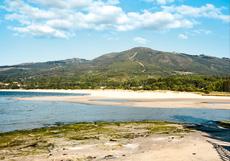
Andalusian Atlantic coast
Mediterranean coast
Andalusian Mediterranean coast
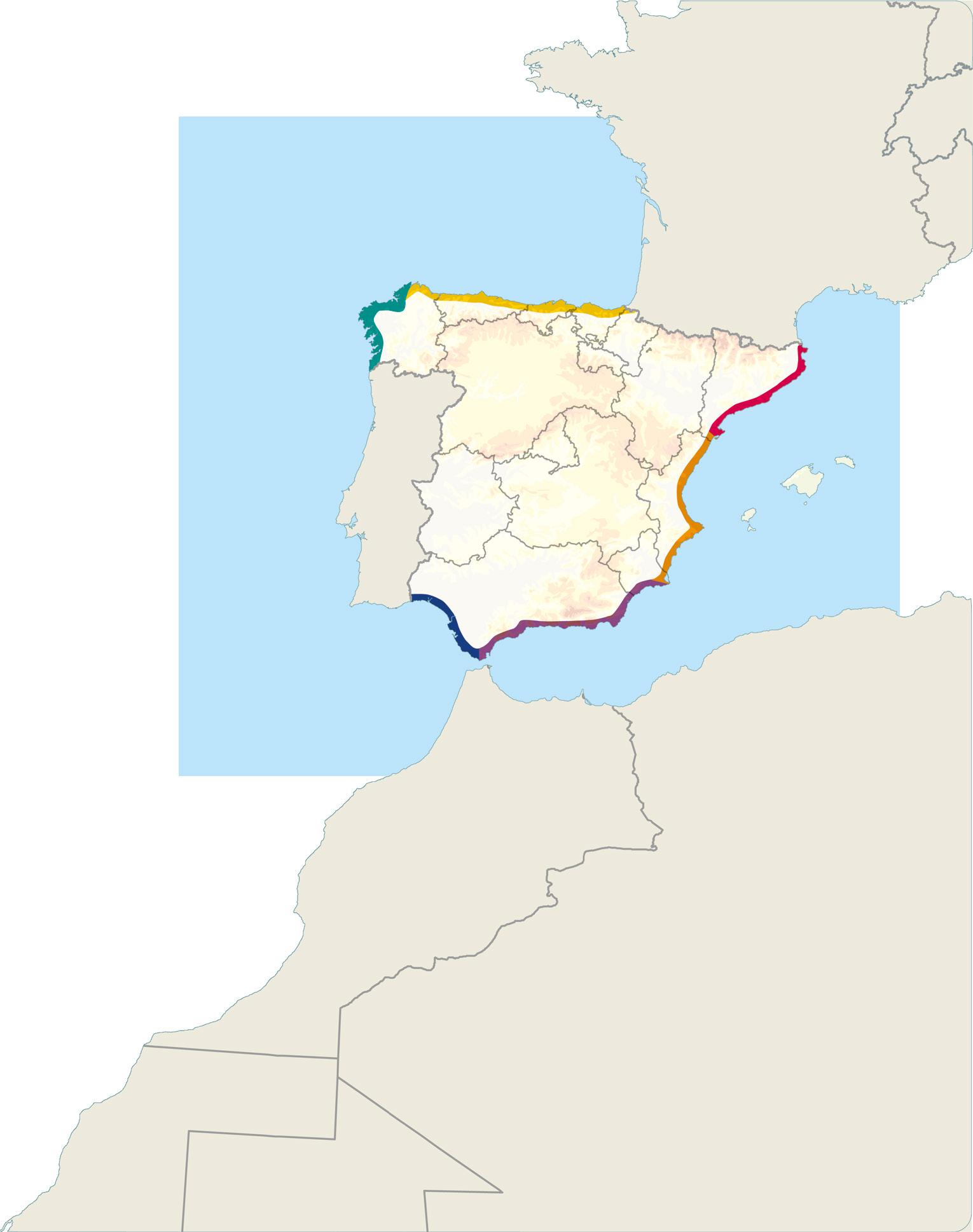
Eastern Mediterranean coast in Valencia
Eastern Mediterranean coast in Cataluña
The Andalusian Atlantic coast is flat and sandy.
The Andalusian Mediterranean coast is both flat and cliffed.
2 Look at the pictures. Which coast do they belong to? Describe them to a classmate. Use words like sandy, cliffed, rocky and steep.
In Murcia and Valencia, the Eastern Mediterranean coast is flat and sandy.
NOW I KNOW…
Spain has got different types of coasts in different areas.

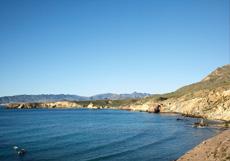
PORTUGAL FRANCE ANDORRA Cantabrian Sea
Mediterranean Sea Ceuta Melilla de Gibraltar Golfo de Almería
Golfo de Valencia Mar Menor Golfo de Cádiz Estrecho
Cabo
Cabo
Delta
ATLANTIC OCEAN
Golfo de Sant Jordi Golfo de Roses
Cabo de Peñas
Ortegal Cabo Matxitxako Cabo de Creus Cabo Fisterra Cabo de Ajo Cabo de Gata Cabo de Palos
de la Nao
del Ebro
0 100 200 300 km
Cabo de Trafalgar
5
1
ChECK WhAT YoU LEArnED
La Coruña
Villaviciosa
Murcia
Huelva
WhAT ArE SpAIn’S ISLAnDS LIKE?
THINK
Where are Spain’s archipelagos and what are they called?
1 Look, listen and read.
Spain has got two archipelagos: the Islas Baleares, in the Mediterranean Sea, and the Islas Canarias, in the Atlantic Ocean.
The Balearic archipelago consists of the islands of Mallorca, Menorca, Eivissa, Formentera and Cabrera. The Sierra de Tramuntana is in Mallorca.
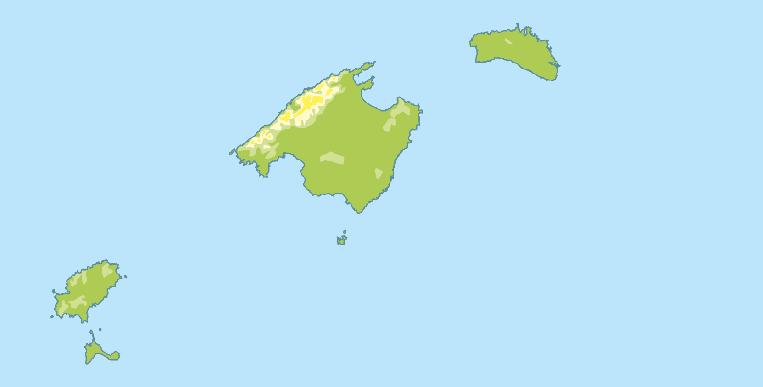
Most of its coasts are cliffed. There are also some flat coasts.
2 With a classmate, say the name of an island and guess the archipelago.
Eivissa!
It belongs to the Islas Baleares.
3 Volcanic rock formed the Islas Canarias. Their flora and fauna are different to the rest of Spain. Make a list of four animal and plant species there. Are they endangered?
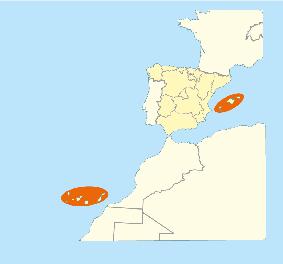
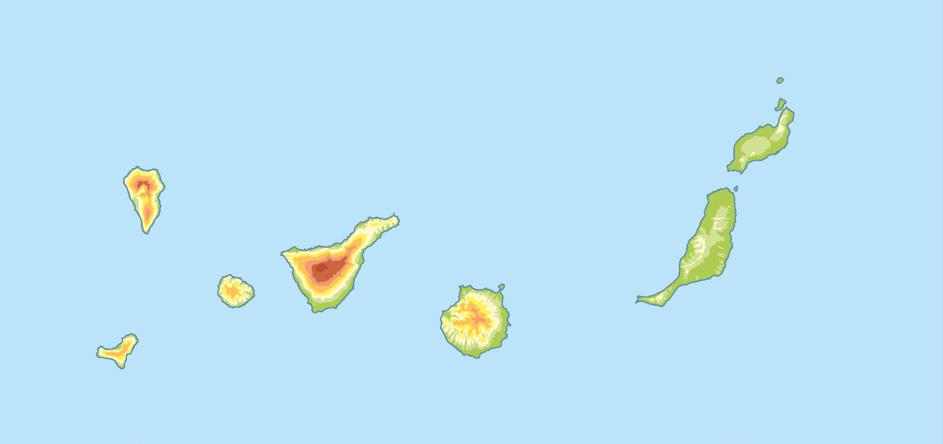
The Canary archipelago consists of the islands of Gran Canaria, Lanzarote, Fuerteventura, Tenerife, La Gomera, El Hierro and La Palma. There are many mountains. They formed from volcanic rock. The Teide volcano, in Tenerife, is 3 718 m high. The coasts are cliffed and steep.
Spain’s archipelagos are the Islas Baleares and the Islas Canarias.
121
6 Spain’s
islands
Sierra de Tramuntana Puig Major 1 445 Eivissa Formentera Mallorca Menorca Cabrera M e d i t e r r a n e a n S e a Peak Altitude (m) 1 500 1 000 700 400 0 0 20 40 80 100 km 60 Islas Baleares Pico de las Nieves 1 949 Teide 3 718 Roque de los Muchachos 2 426 Fuerteventura La Gomera Tenerife La Palma El Hierro Gran Canaria La Graciosa Alegranza Lobos Lanzarote ATLANTIC OCEAN 0 20 40 80 100 km 60 Peak Altitude (m) 4 000 3 500 2 000 1 500 1 000 700 400 0 Islas Canarias
WhAT YoU LEArnED
ChECK
NOW I KNOW…
WhY Do WE hAVE ThESE LAnDSCApES AnD noT oThErS?
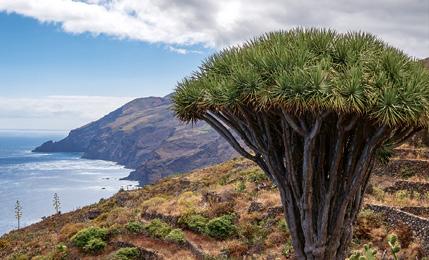
Climate and landscape THINK
What is the climate like where you live?
Spain’s
Oceanic climate
Cold winters and mild summers. Abundant precipitation all year.

Continental climate

Very cold winters and very hot summers. Precipitation is abundant in autumn and spring, and very low in summer.

Subtropical climate
Mild, warm temperatures all year. Very low precipitation.
122
ATLANTIC OCEAN
Cantabrian Sea
ATLANTIC 7
OCEAN
1 Look, listen and read. Climate is the weather in a place over many years. It depends on: latitude, altitude, relief and the sea.
2 Look at the map again. Choose a city in Andalucía and find information about its climate. Complete the table below.
We use temperature, humidity, atmospheric pressure, precipitation, wind and cloudiness to describe climate.
Mountain climate
Cold temperatures all year. Abundant precipitation all year. Snow in winter.
3
Mediterranean climate
Mild winters and warm summers. Irregular precipitation, more often in spring.
What kind of climate do you like the most? What sports can you play in different climates?
I like the mountain climate.
Do you like skiing?
NOW I KNOW…
ChECK
We have got continental, subtropical, oceanic, mountain and Mediterranean climates in Spain.
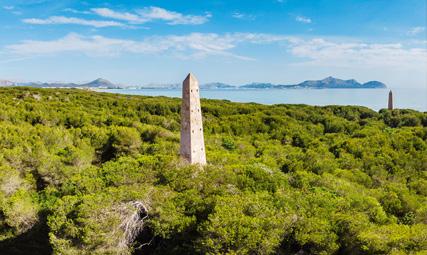

123 0 100 200 300 km Oceanic Continental Mediterranean Mountain Subtropical Climates of Spain M e d i t e r r a n e a n S e a climates Altitude Temperature Humidity Precipitation high / low warm / cold high / low abundant / low
Yes, I do. WhAT YoU LEArnED
WhAT MAKES AnDALUCÍA SpECIAL?
What landforms are there where you live?
1 Look, listen and read.
The relief in Andalucía is varied. Around Andalucía, we can find:
• The Sierra Morena (north), the Sistemas Béticos (south) and the Depresión del Guadalquivir.
• The Atlantic coast (from Huelva to the Estrecho de Gibraltar) and the Mediterranean coast (from the Estrecho de Gibraltar to the Región de Murcia).
2 Answer the questions.
a) What are the two most important mountain ranges in Andalucía?

b) What is between those mountain ranges?
c) What two bodies of water surround the coasts of Andalucía?

3 Plan a trip from Almería to Sevilla. What main landforms do you need to cross?
First, we have to cross the Sierra de Gádor.

124 8
Relief in Andalucía THINK Sevilla Cádiz Málaga Almería Granada Jaén Córdoba Huelva 0 50 km Altitude (m) 3 500 2 000 1 500 1 000 700 400 200 0 ATLANTIC OCEAN Cabo de Trafalgar Punta de Tarifa Estrecho de Gibraltar G o lfo de Cádi z Golfo de Almería Cabo de Gata Me d i t e a n S e a S I E R R A M O R E N A C O R DILLERA S C O R D I L L E R A P E N I B É T I C A Serranía de Ronda Si e r r a N e v a d a S . a de BazaS a de los Filabres S.a de Gádor S a de Calder S.a de Aracena S.a de los Santos V all e d e l G u a d a l q u i v i r
Sierra
Nevada
Doñana National Park
1 Read the text about the Iberian lynx and answer the questions.
The miracle of the Iberian lynx
In the year 2000 there were under one hundred Iberian lynx. This was because humans hunted lynx and the rabbits they eat. Fortunately, by introducing various plans, the lynx population has recovered: in 2020 there were more than 1 000 specimens.

However, it is still an endangered species. It is very important to continue taking care of this species and its environment.
a) What’s the difference between the lynx population in 2000 and 2020?
b) Why was the lynx endangered in the year 2000?
c) Is the lynx an endangered species now?
d) What can you do to take care of the Iberian lynx?
In the year 2000 the lynx was almost extinct.
In the year 2020 there were more than 1000 lynx!
2 Find out some of the most common animal species in the Doñana National Park. Choose one of them and make a fact file.
Name of the animal:
Feeding:
Years it lives: Is it endangered?:

NOW I KNOW…
The purpose of the project Evaluación de los Ecosistemas del Milenio en Andalucía (EMA) is to make sure that ecosystem services support human well-being.
125
T h E IBE r IA n LY n X A n D D o ÑA n A ChECK WhAT YoU LEArnED
Fact file
Your turn!
Taking care of landscapes

WhAT IMpACT Do pEopLE hAVE on LAnDSCApES?
THINK
Do you take care of ecosystems? How?
1 Look, listen and read.
Climate change is the variation in our planet’s climate. Nature and human actions cause climate change.
Consequences of climate change
Torrential rains

High temperatures
2 Which consequences of climate change worry you the most? Explain why.
Droughts
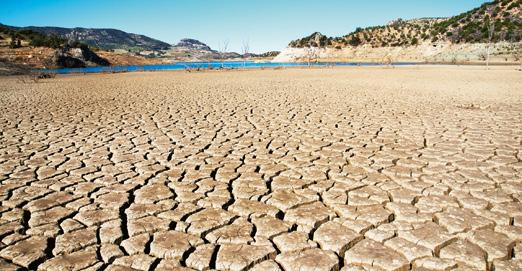
Rise in sea levels

3 Has the climate in Andalucía changed in recent years? Discuss.
Last year it was extremely warm. It was very hot!
126 9
4 Look for information about three things that damage landscapes in your town. Propose a solution to each one.
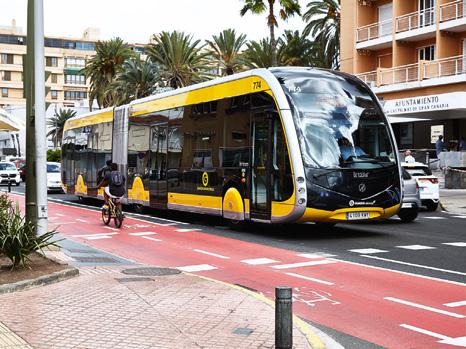
How to protect landscapes
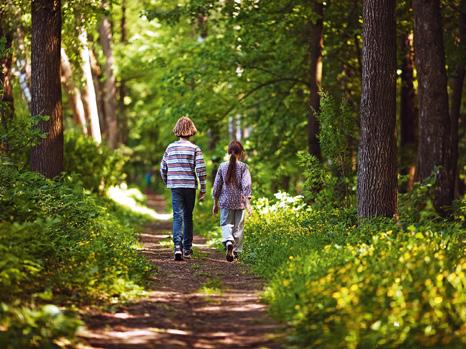
Respect nature
Save energy
5 Choose one of the examples above. Explain why it is important.
6 1-2-4
What other things can you do to take care of landscapes? Share your ideas with your classmates.

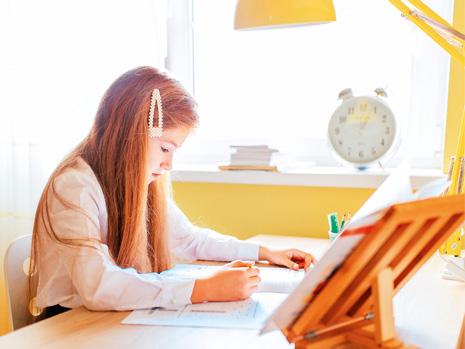
NOW I KNOW…
Don’t waste water
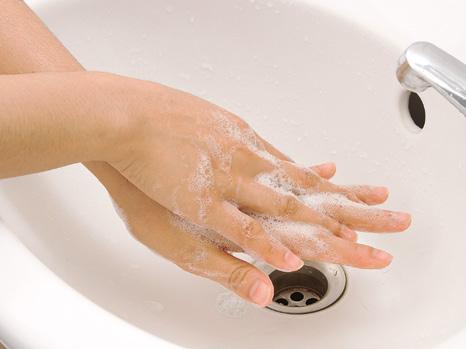
We shouldn’t take long showers.
We should turn off the lights.
It is important to take action to preserve our landscapes and the animals and plants that live in them.
127
ChECK WhAT YoU LEArnED
public transport Recycle
Use
MY ViSUAL SUMMARY
human activity natural events
Depending on human intervention
Natural landscapes: no human intervention

Artificial landscapes: human intervention
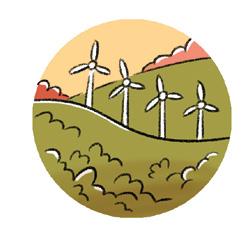
Landscapes
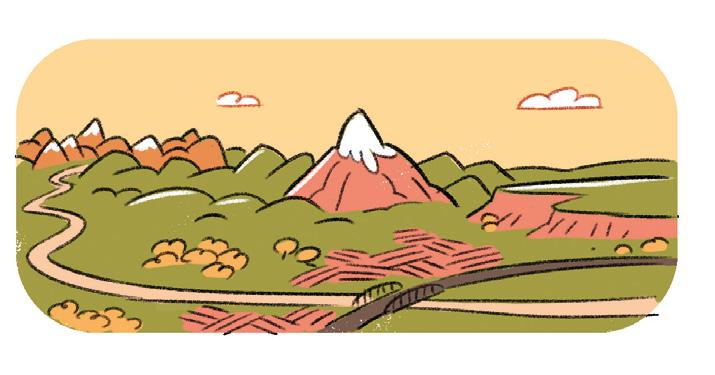

Can change because of Classification
Depending on proximity to the sea or ocean
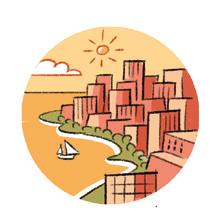
Inland landscapes

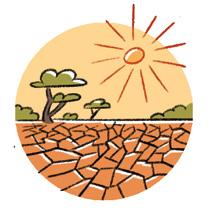
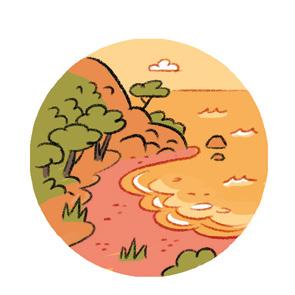
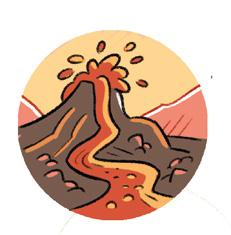
coastal landscapes
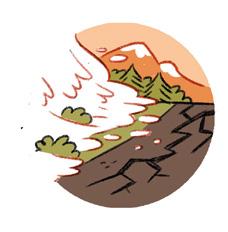
128
range
plateau plain valley cape island gulf peninsula bay
mountain
archipelago mountain
Spain’s landscapes
Inland landscapes
Coastal landscapes
Relief in Andalucía
Sierra de Aracena
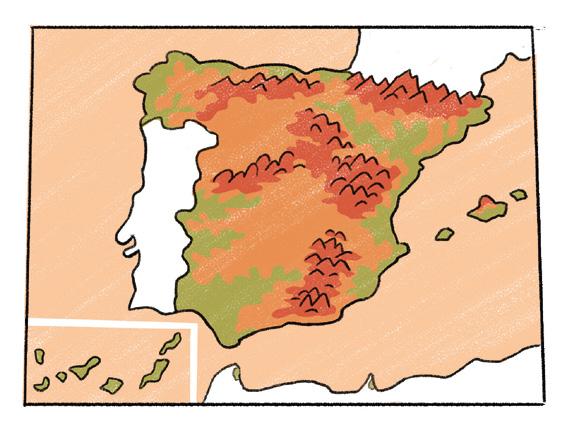
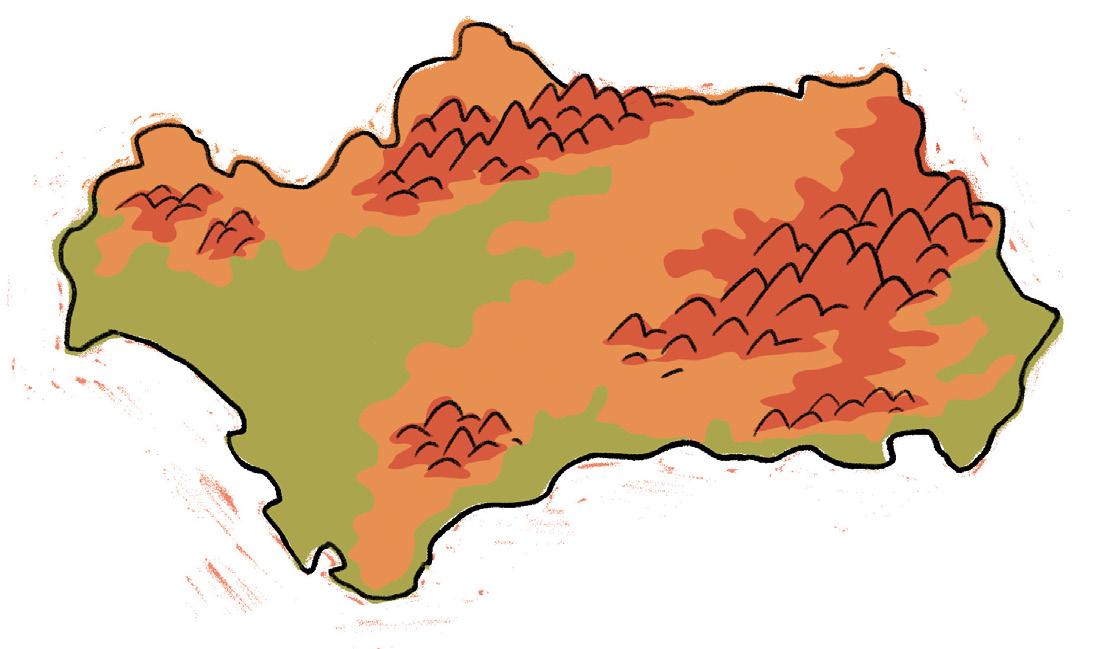
Golfo de Cádiz
Sierra Morena
Valle del Guadalquivir
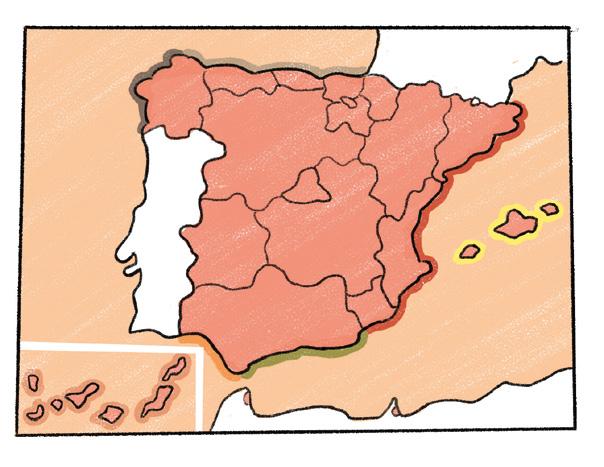
Subbética
Cabo de Trafalgar
Serranía de Ronda
Penibética
129
PORTFOLiO
WhAT hAVE I LEArnED?
1 Are these changes artificial or natural? Classify them.
Volcanic eruptions Droughts and floods
2 What is a landscape?
3 Name the different types of landscapes in Spain.
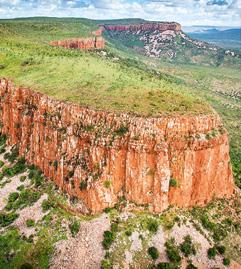
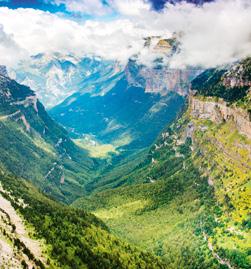
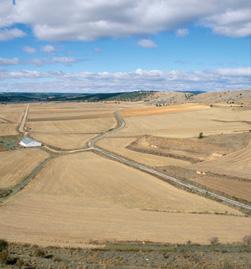

4 Look at the pictures. Write the names of the landforms.
5 Read and complete these sentences in your notebook..
a) The main landforms in a mountain landscape are •••, ••• •••, •••, and •••
b) A group of mountains form a mountain range. A group of mountain ranges form a •••
c) A ••• is low, flat land between mountains. It normally contains a •••
6 Name Spain’s inland mountain systems.
7 Draw a map of Spain and colour each coast with a different colour. Then, label them.
8 Classify these coastal landforms into capes and gulfs.
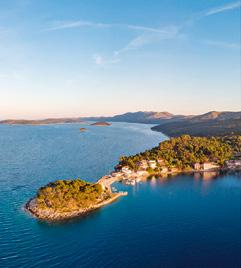
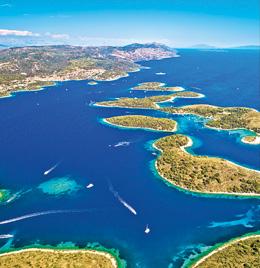
Fisterra Gata Valencia
Capes Gulfs
9 In pairs, make cards of Spain’s geographical elements. Put the cards face down. Take turns to turn them over and point to them on the map.
10 Think of solutions to the types of damage people cause to landscapes.
Traffic lights. Apply this colour code to each activity in your notebook.
I knew the answer.
I needed help.
I couldn´t answer the question.
130
Creus Cádiz Almería
Construction Deforestation
1 2 3 4 5 6
ACTIon
Detecting causes and finding solutions is a good way to help ecosystems.
How can we stop the destruction of our landscapes? Who is responsible for this?
What is a landscape? What are its characteristics?
1 2 3 4
Why do people damage landscapes? What are the consequences?
What changes can occur in our landscapes?
What new things did you learn? What pictures do you remember? What did you enjoy learning about the most? How is it useful? Does it help you in your daily life?
2 Think about what you and your classmates can improve in the future.
Do you think that individual citizens are responsible for the destruction of landscapes and ecosystems?
Do you think it is important to protect the biodiversity of our country?
What are the negative consequences of the disappearance of animal and plant species?
131 1
Use the logic wheel to think about how we can enjoy landscapes sustainably. Present your ideas to your Town Hall. TAKE
Logic wheel
1
hoW hAVE I LEArnED?
Think about this!
DO WE WANT TO CHANGE OUR life?
I live in Sevilla and I have a friend from Syria. Her name is Yusra. We are from different cultures, but we live in the same place. We learn many things together!
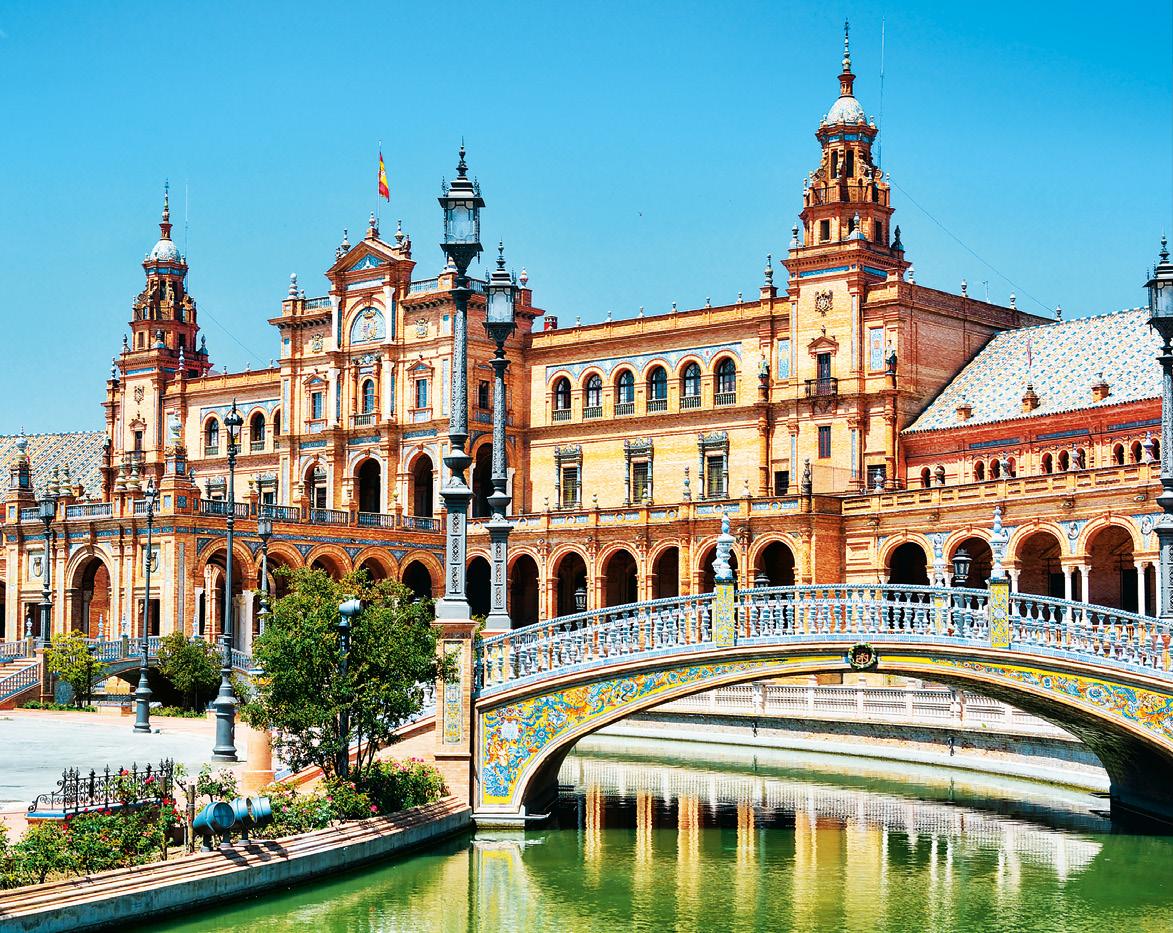
WHAT DO YOU THINK?
Do you think everyone in your locality lives in the same conditions?

Can you imagine moving to a different country?
whaT Is goINg On arOUND you?
In 2019 there were about 272 million immigrants in the world.
WHAT cAN you do To HElp?
Think about the causes and effects of migration. TAKE


156
8 10
ACTIon
WhY DoES ThE popULATIon InCrEASE or DECrEASE?
WHAT do you NEeD To knOW To TaKe aCTIOn?
Population 1
2 Population changes
YoU rECognISE EnT popULATIon pS?
hoW ArE popULATIon AnD EMpLoYMEnT rELATED?
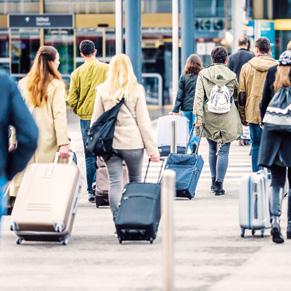

The population in Spain
3
hoW DID ThE SpAnISh popULATIon ChAngE?

4 Population and employment
The population in Andalucía
5
WhAT IS ThE popULATIon In AnDALUCÍA LIKE?
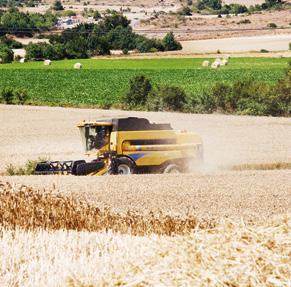

157
CAn YoU rECognISE DIFFErEnT popULATIon groUpS?
Can you identify groups in a population?
1
Look, listen and read.
The population is the group of people who live in a specific geographical area.



Demography studies the distribution and characteristics of the population.
Municipal register
What is it?: A record of the people in a municipality.
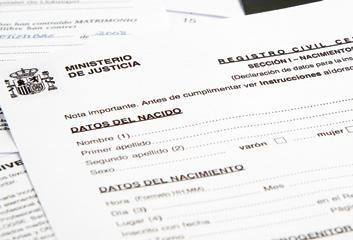

Data: Name, address, profession, etc. of all the inhabitants of a locality.

When is it performed?: Every year
How do we measure population?
Census
What is it?: A record of the people in a country.
Data: Name, address, profession, etc. of all the inhabitants of a country.
When is it performed?: Every ten years
Age
Young: under 16
Adult: from 17 to 64
Elderly: over 65
Work
Active population: adults who are working (working population) or looking for a job (unemployed population).
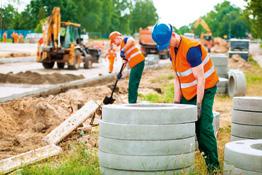
Inactive population: people who are not working: students, retired and disabled people. Also people who care for their family without receiving money.
Go to the video ‘The population’ at anayaeducacion.es to learn about population classification.
158
Population 1
t HINK
Population distribution Gender Male Female
2 Read the sentences. Are they true or false? Correct the false sentences with a classmate.
a) The population is the total number of people who live in an area, like a town or a city.
b) The census measures the population every year.
c) The municipal register collects the personal data of all the inhabitants of a country.
d) People who are working are unemployed or inactive.
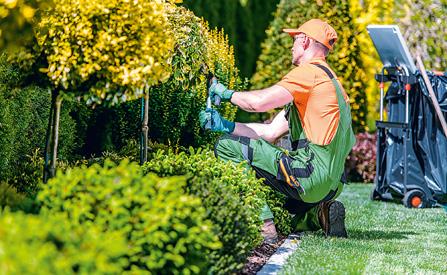
3 Look at the picture and make a fact file about the person. Use the population distribution categories.
1 Bring pictures or draw your family members.
2 To which age, gender and work group does each member belong?
3 Make a poster with the pictures and the information about each family member. Share the information with your classmates.
4 Do all the population groups have the same needs? Think about the information you collected and answer.
a) Do men and women receive the same treatment?
b) Does being employed or unemployed influence access to resources?
c) Do the young, adult and elderly population have the same needs?
Go to ‘I’ll tell you in a moment’ at anayaeducacion.es to find a summary of these elements.

159
ChECK WhAT YoU LEArnED
Fact file
MY FAMILY IS p A rT o F T h E pop ULATI on ! Your turn!
KNOW…
Each person in the population is unique and has got specific needs.
NOW I
Population
WhY DoES ThE popULATIon InCrEASE or DECrEASE?
t HINK
Why does the number of people in a population change?
Many people put their lives in danger when they emigrate. They are usuallt forced to emigrate to flee from war, epidemics or famine.
1 Look, listen and read. Different factors can change a population.
Birth rate
Number of babies that are born. It causes an increase in the population.

Immigration
People come from other places to live in a country. It causes an increase in the population.
More
Number of births
Number of deaths

NATURAL GROWTH
Death rate
Number of deaths. It causes a decrease in the poopulation.
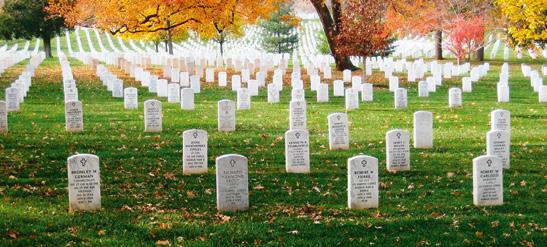
Emigration

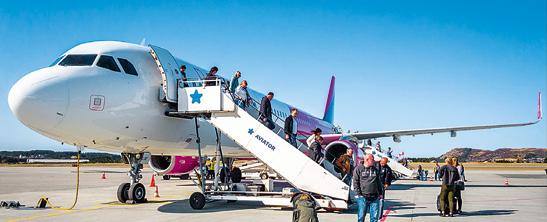
People leave their country to live in another country. It causes a decrease in the poopulation.
Types of growth
Natural growth
Migration
(Immigrants - Emigrants)
REAL GROWTH
When the population increases, the real growth is positive. When the population decreases, it is negative.
160
2
changes
births means the population increases and the growth is positive.
2 Match the words to their definition in your notebook.
immigration death rate birth rate emigration
a) A person who goes to live in another country.
b) Number of deaths in a population.
c) Number of babies that are born in a population.
d) A person who comes to live in a country.
3 How do we calculate the real growth of a country? Choose the correct option.
a) We add up the natural growth and the migration.
b) We subtract the number of deaths from the migration.
c) We subtract the immigrants from the natural growth.
d) We add up the births and the deaths.
1 A town needs to increase its population. It asks its citizen for ideas. Which two do you think are the best ideas? Why?
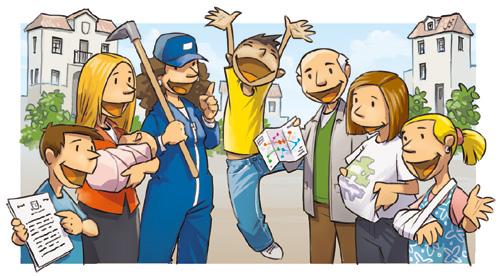
Offer cheap housing to people with low incomes.
Offer better services in your Health Centre.
Offer better public transport.
Offer good working conditions.
2 In pairs, think about a population where you live. Think of ideas to solve the problem. Present it to your classmates. My town has got a low birth rate.
We can offer parents more help.
3
Do people come to live in your town for the same reason? Why is your town a good place to live?
The population increases or decreases for many reasons.
161
ho
T
E?
W CA n WE h EL p
h E pop ULATI on To C h A ng
I KNOW… ChECK WhAT YoU LEArnED Your turn!
NOW
Most populated areas
Least populated areas
Capital of autonomous community
Many villages are not inhabited.
CANTABRIA PRINCIPADO DE ASTURIAS
The sub-mesetas and mountainous areas are less populated.
CASTILLA Y LEÓN
Distribution of the Spanish population

PAÍS VASCO COMUNIDAD FORAL DE NAVARRA
Ageing population. The birth rate is low and people live longer.
COMUNIDAD DE MADRID
ISLAS BALEARES COMUNIDAD VALENCIANA
CASTILLALA MANCHA
Ciudad Autónoma de Ceuta
REGIÓN DE MURCIA
Ciudad Autónoma de Melilla
Characteristics of the Spanish population
Most people live in cities, by the coast and in the archipelagos.
Young people emigrate to find a job.

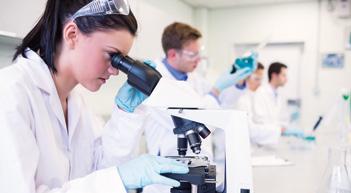
High immigration. It increases the population of Spain.

3 0 100 200 300 km
GALICIA
LA RIOJA
ANDALUCÍA ARAGÓN CATALUÑA
EXTREMADURA CANARIAS
Santa
Santiago
Oviedo Santander Zaragoza Valencia Palma Valladolid Madrid Mérida Sevilla Murcia Toledo Barcelona Pamplona Vitoria-Gasteiz Logroño
Las Palmas de Gran Canaria
Cruz de Tenerife
de Compostela
Spanish emigration in the past
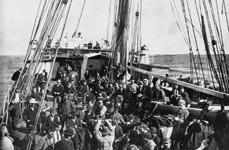
With the discovery of America, people migrated to the New World.
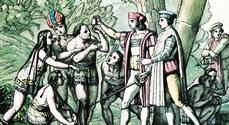
1492
People left the countryside and emigrated to cities (rural exodus).

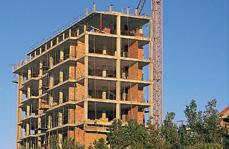
1850-1975
During the Civil War many people emigrated to other countries.
During the 2008 crisis many young people moved to other countries.
1936-1939 2008
2 Look at the map on the previous page and answer.
a) Where does most of the population live?
b) What areas have got a low population?
c) What is the population like where you live?
3 Complete the text about the Spanish population with the correct words.
The Spanish population is getting ••• . There are two main reasons for this:
• A ••• in the birth rate.
• An ••• in how long people live. Advances in ••• mean that people can live longer.
4 In pairs, choose one of these years. Make questions about migration to guess the year.
1492
1936-1939
NOW I KNOW…
1850-1975 2008
Have you got problems with...
medicine decrease increase
ChECK WhAT YoU
older
163
The Spanish population is very diverse and is not equally distributed. LEArnED
Have you got a job? No, I haven’t.
hoW ArE popULATIon AnD EMpLoYMEnT rELATED?
How does employment affect the population of a place?
1 Look, listen and read.
We group different jobs into different economic sectors. People work to receive a salary. There are more economic activities in the autonomous communities with bigger populations.
The localities in the south of the Peninsula and the autonomous cities (Ceuta and Melilla) have got the lowest incomes.
Primary sector
Secondary sector
It consists of activities that obtain products from nature.
Tertiary sector
It consists of activities that provide services. It is the most important sector in Spain.

It consists of activities that transform natural products into manufactured products.
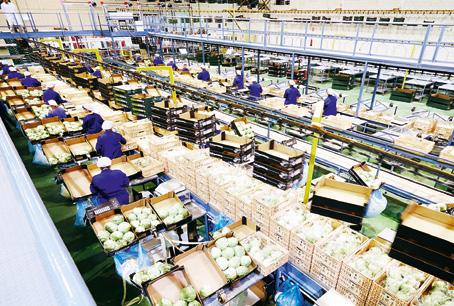

164
Population and employment 4
The economic sectors
t HINK
2
To which economic sectors do these activities belong?
Cutting down trees
Making
Selling furniture made of wood

a wooden chair
3 Look at the pictures. Do they belong in the primary, secondary or tertiary sector?

1 Make groups of three. Each person in the group represents an economic sector. Decide how you all work together to make and sell cartons of orange juice.

I represent the primary sector…
NOW I KNOW…
Areas with more economic activities have got a bigger population. We can group jobs into three economic sectors.
LEArnED

165
YoU
ChECK WhAT
r E
n
1 2 3
pr ESE
TI ng ECono MIC SECTorS!
Your turn!
WhAT IS ThE popULATIon In AnDALUCÍA LIKE?

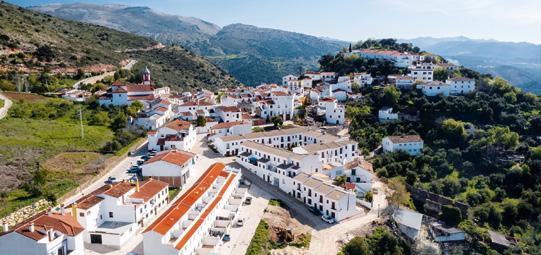
 t HINK
t HINK
Has the population of Andalucía got the same characteristics as the other parts of Spain?
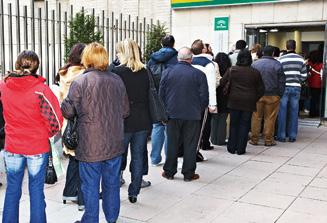
1 Look, listen and read.
The coastal areas and the capitals of the provinces have got the biggest populations.
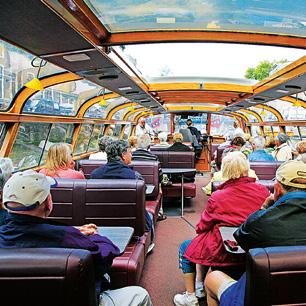
Most people work in the secondary and tertiary sectors.
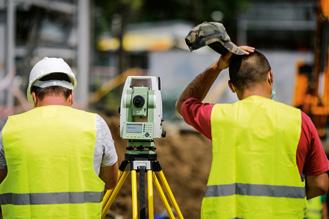
The inland and mountainous areas have got the smallest populations.
Most people work in the primary sector.
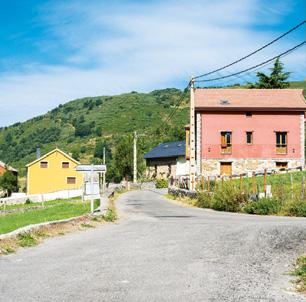
166
The population in Andalucía 5
Distribution of the population in Andalucía
Huelva Atajate, Málaga.
Andalusian population
Ageing population High unemployment rate
High number of immigrants
2 Look at the map of the population of Andalucía and answer.
a) Name the three most populated provinces in Andalucía.
b) Name the two provinces with the lowest populations in Andalucía.
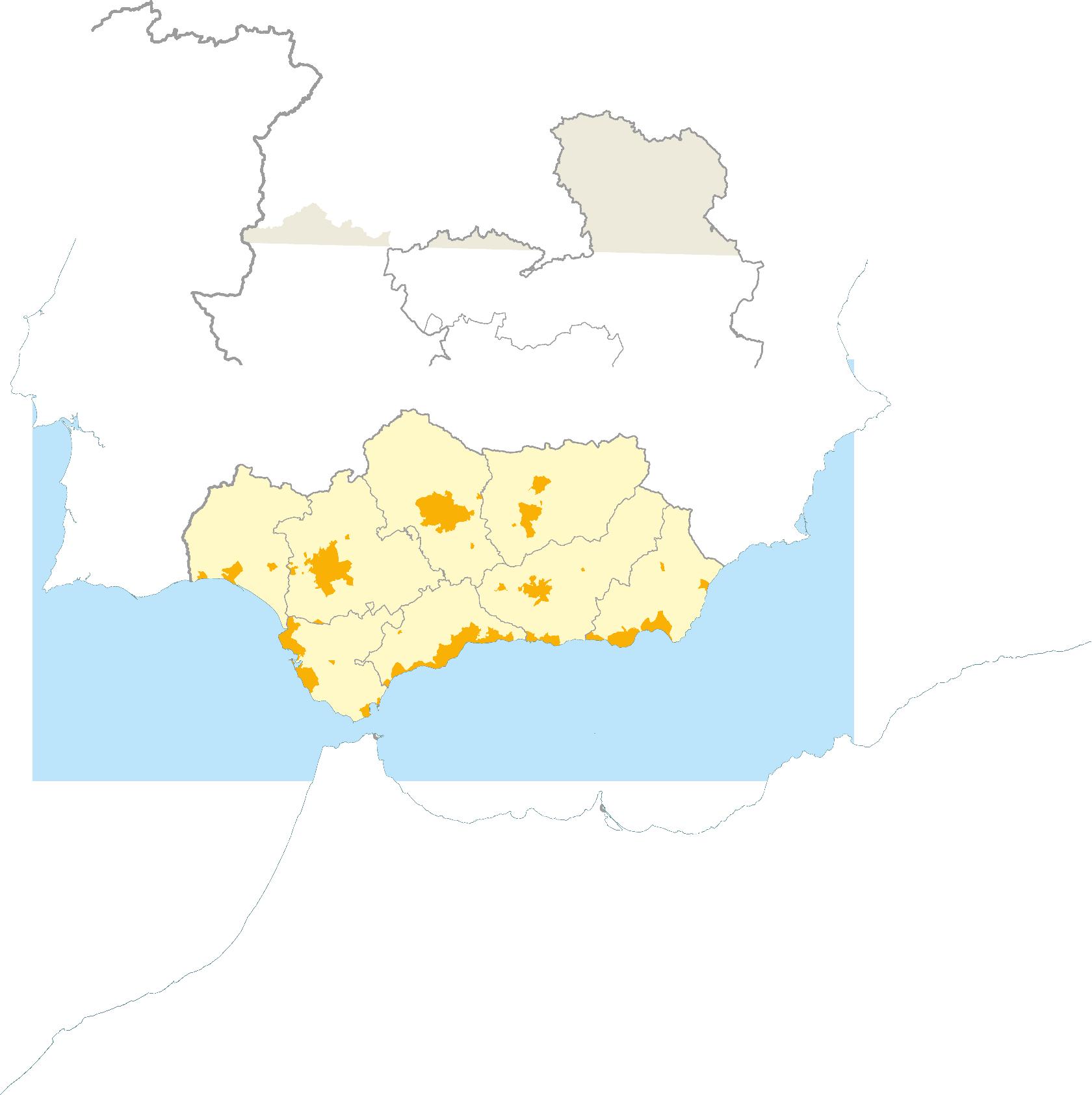
c) Are the areas with the lowest populations in coastal areas? Why?

3 Think of things to convince people to live in Andalucía. Use the diagram to classify your ideas. Share your ideas with a classmate.
We have got many crops. That’s an advantage! Advantages
Disadvantages Your turn!
T h E r ED C ro SS A n D IMMI gr ATI on
Most immigrants in Andalucía come from Africa on boats. The Red Cross has got reception centres to help them when they arrive on the coasts.
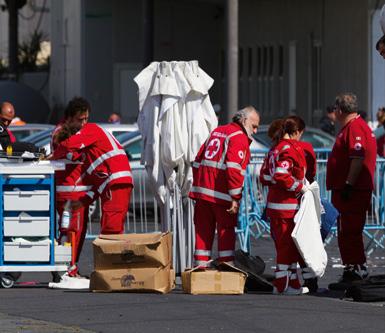
NOW I KNOW…
Andalucía is the most populated Spanish autonomous community. Its population has got similar characteristics to the other parts of Spain.

167 Most populated areas Least populated areas Capital of province Autonomous community boundaries Province boundaries Country boundaries 0 50 100 km CIUDAD AUTÓNOMA DE CEUTA GIBRALTAR
MOROCCO SEVILLA MÁLAGA CÓRDOBA JAÉN GRANADA ALMERÍA HUELVA
(UNITED KINGDOM)
CÁDIZ
Córdoba Granada Almería Cádiz Huelva Jaén Sevilla Málaga
1 Visit the Red Cross official webpage. Is there a centre near you? What do they do there? What can you do to help? ChECK WhAT YoU LEArnED
MY ViSUAL SUMMARY
How do we measure population?
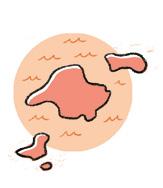

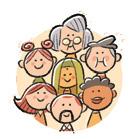

People who live in a place.
Inhabitants in a city or town

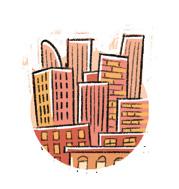
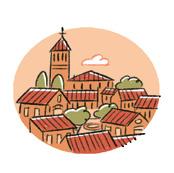
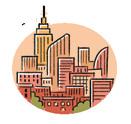
Inhabitants in a country
Young: 0-16

Adult: 17-65



Elderly: 65 +
Active: working or looking for a job

Inactive: not working

Coastal areas Capital cities Archipelagos Inland areas
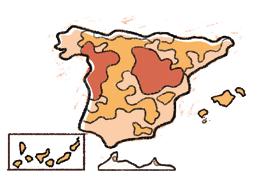
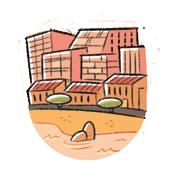
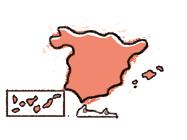
168
Female Male
Highest population Lowest population
Gender
area
Age Work
Geographical
Census
Municipal register
Population distribution
Population changes
Two types of increase
Emigrants go to other places. Immigrants come from other places.

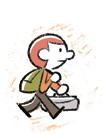
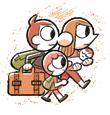
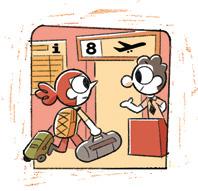



Natural growth
Highest population Cities and coastal areas
The population in Spain



Lowest population Rural villages
Real growth
High immigration rate From Africa, Asia and Latin America
Ageing population Low birth rate and people living longer
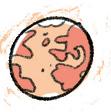

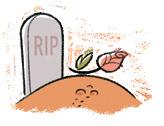



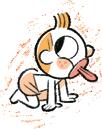



Urban population

Large, highly populated cities (Madrid and Barcelona)
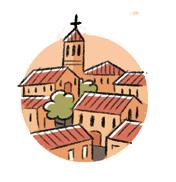

169 Births Births Immigrants Emigrants Deaths Deaths
Birth rate Death rate Migration
- - +
PORTFOLiO
WhAT hAVE I LEArnED?
1 What is population?
2 To which population groups do you and the oldest member of your family belong?
3 Answer these questions.
a) What data do the census and the municipal register collect?
b) How often do they measure the population?
4 Match each word with its definition in your notebook. Birth rate
People leave their country to live in another county. Death rate
The number of people born in a specific place and time. Emigration
The number of people who die in a specific place and time. Immigration
People move to a new country to start a new life.
5 Read this news: ‘Rescue teams help sixty-one immigrants in a boat near Fuerteventura’. Why do you think they put their lives in danger to leave their country?
6 Why does the birth rate in Spain decrease? Why do people live longer?
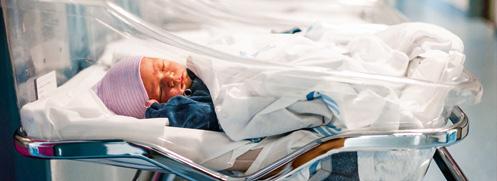
7 Is the population increasing or decreasing?
a) This year in Sara’s village, fifty babies were born and fifteen people died.
b) This year, in Luis’ village, there were more deaths and emigration than last year.
8 Are the sentences about the Spanish population true or false?
a) In Spain, the number of immigrants decreases every year.
b) People live longer. There is a low birth rate.
c) Young people don’t emigrate to other countries
d) Most of the Spanish population lives in towns.
9 Look at the graph and answe
According to the characteristics of the Spanish population. Which colour line do you think represents births? Why?
Traffic lights. Apply this colour code to each activity in your notebook.
I knew the answer.
I needed help.
I couldn’t answer the question.
170
100 200 300 400 550 500 50 150 250 350 450 Thousand persons 0 2000 2001 2002 2003 2004 2005 2006 2007 2008 2009 2010 2011 2012 2013 2014 2015 2016 2017 2018 2019 2020 Years
Think about the causes and effects of migration.
1 Look at the words. Using the technique ‘Before I thought…, Now I think…’, relate them to migration. Then, complete the table with your own thoughts about migration.
Education security Equality Housing Pollution Family Work Health

Before, I thought… Now, I think… Reasons
2 Write a letter to a migrant that starts like this:
‘Dear migrant, I don’t know you and I don’t know what your name is. But I want to write you this letter…’
hoW hAVE I LEArnED?
1 What new things did you learn? What pictures do you remember? What did you enjoy learning about the most? How is it useful? Does it help you in your daily life?
2 Think about what you and your classmates can do better in the future.
Think about this!
Is there only one reason why people decide to change their lives?
Imagine that you are an emigrant. How do you want people to treat you in your new country?
Do you think that all the population groups receive respect and protection in your locality?
171
All rights reserved. No part of this publication may be reproduced, stored in a retrieval system, or transmitted, in any form or by any means, electronic, mechanical, photocopying, recording, or otherwise, without the prior permission of the publishers.
© GRUPO ANAYA, S.A., 2023 - C/ Valentín Beato, 21 - 28037 Madrid.



































































































































































































































































































































































































 t HINK
t HINK








































